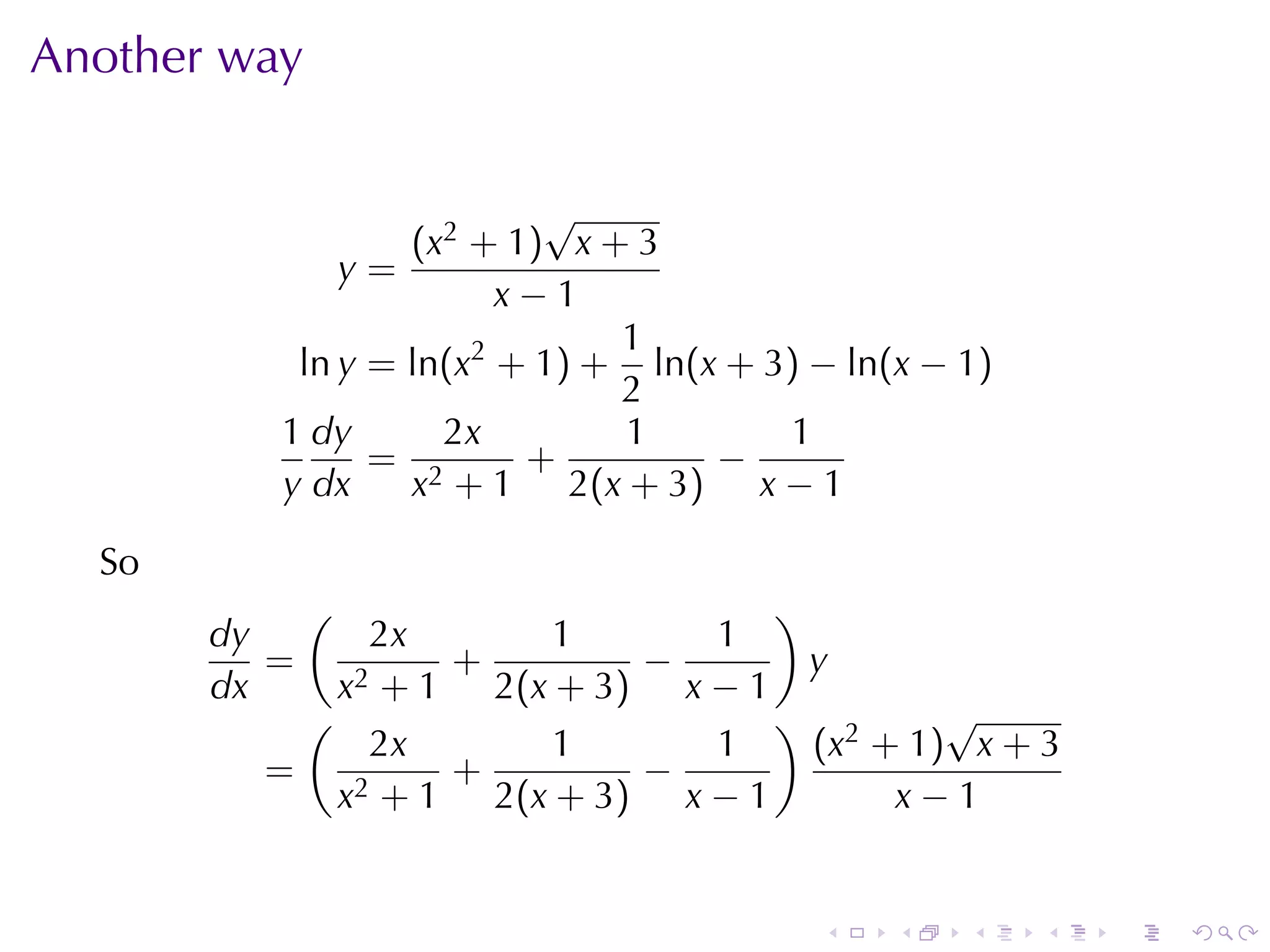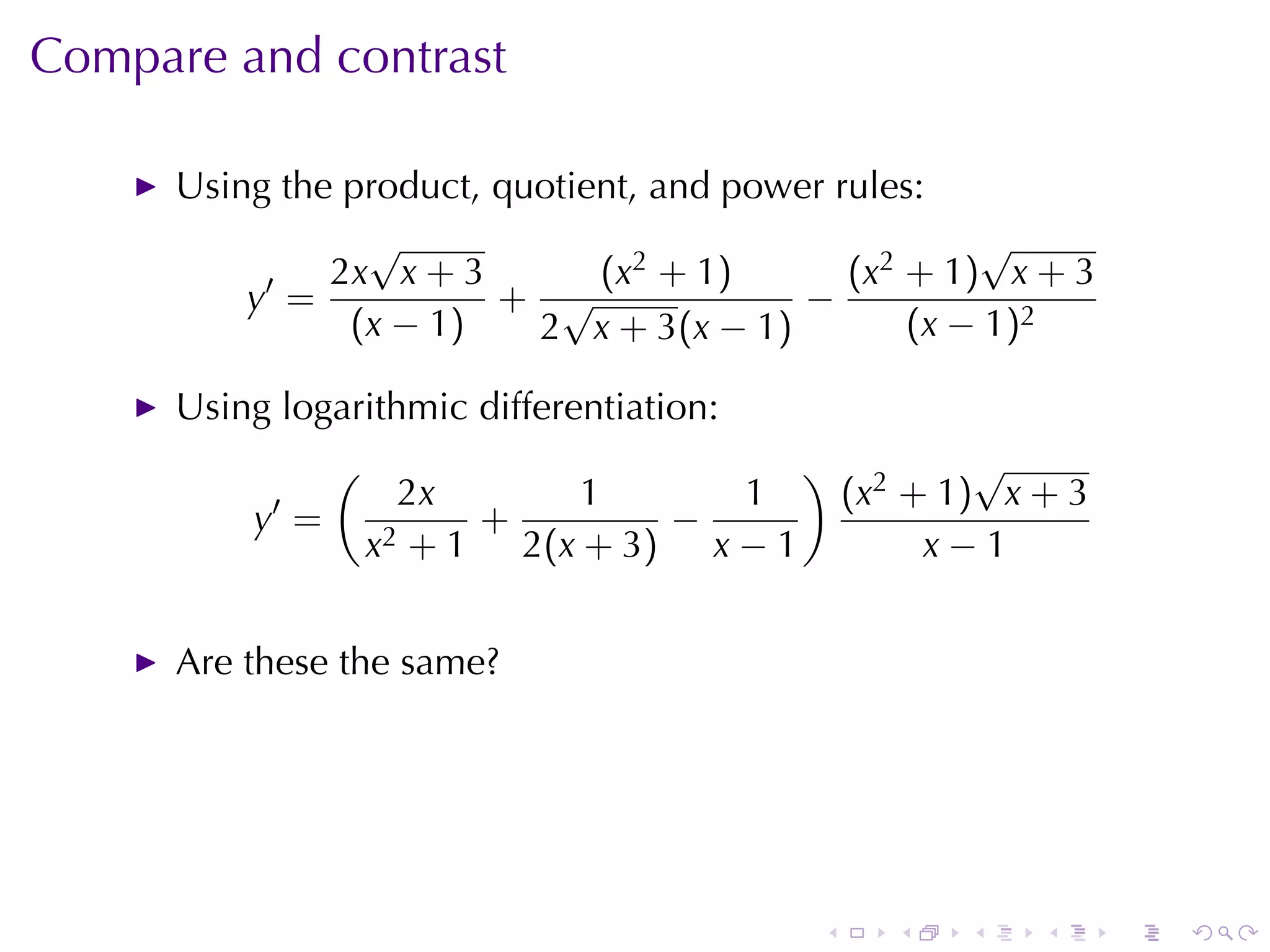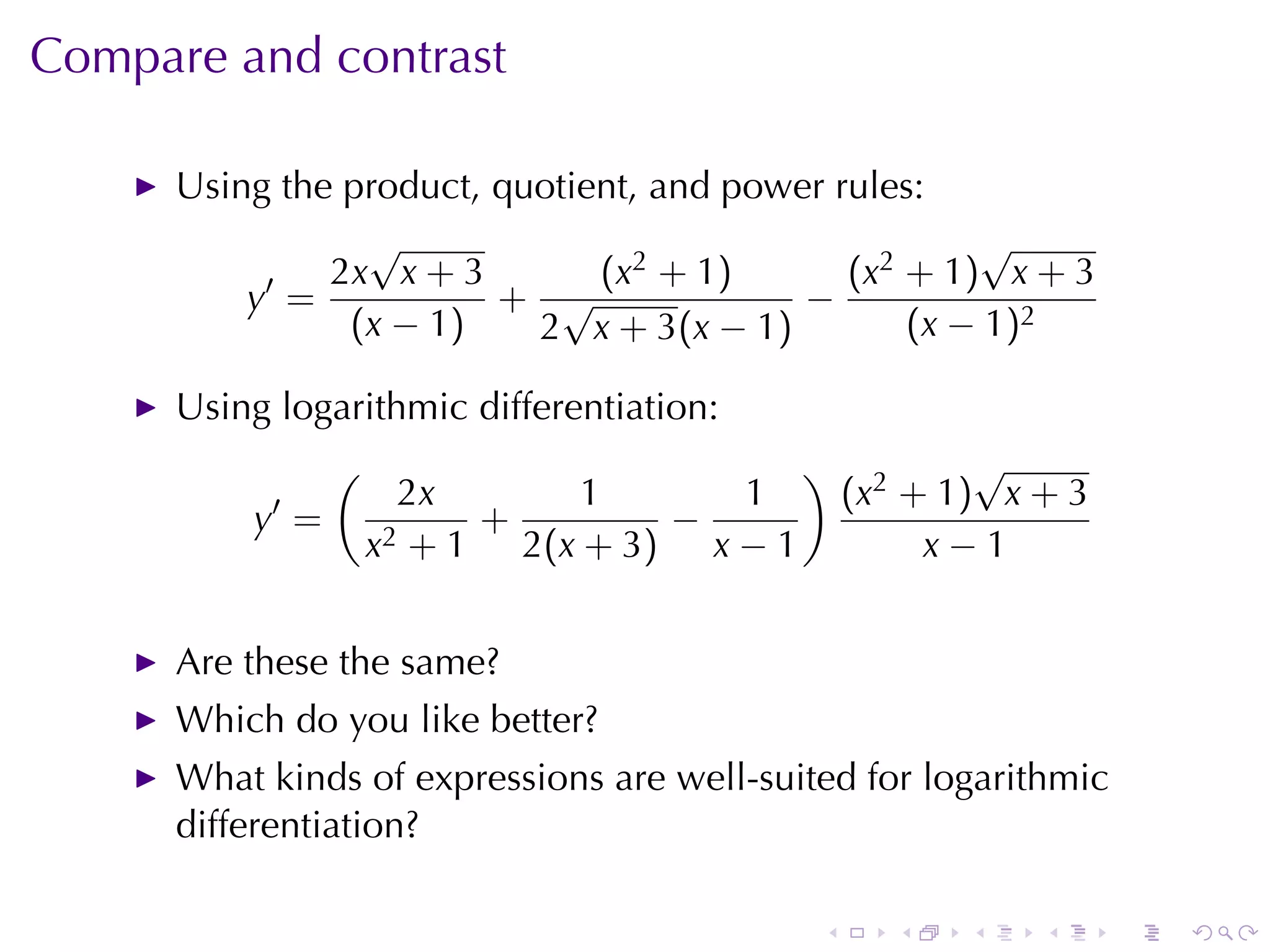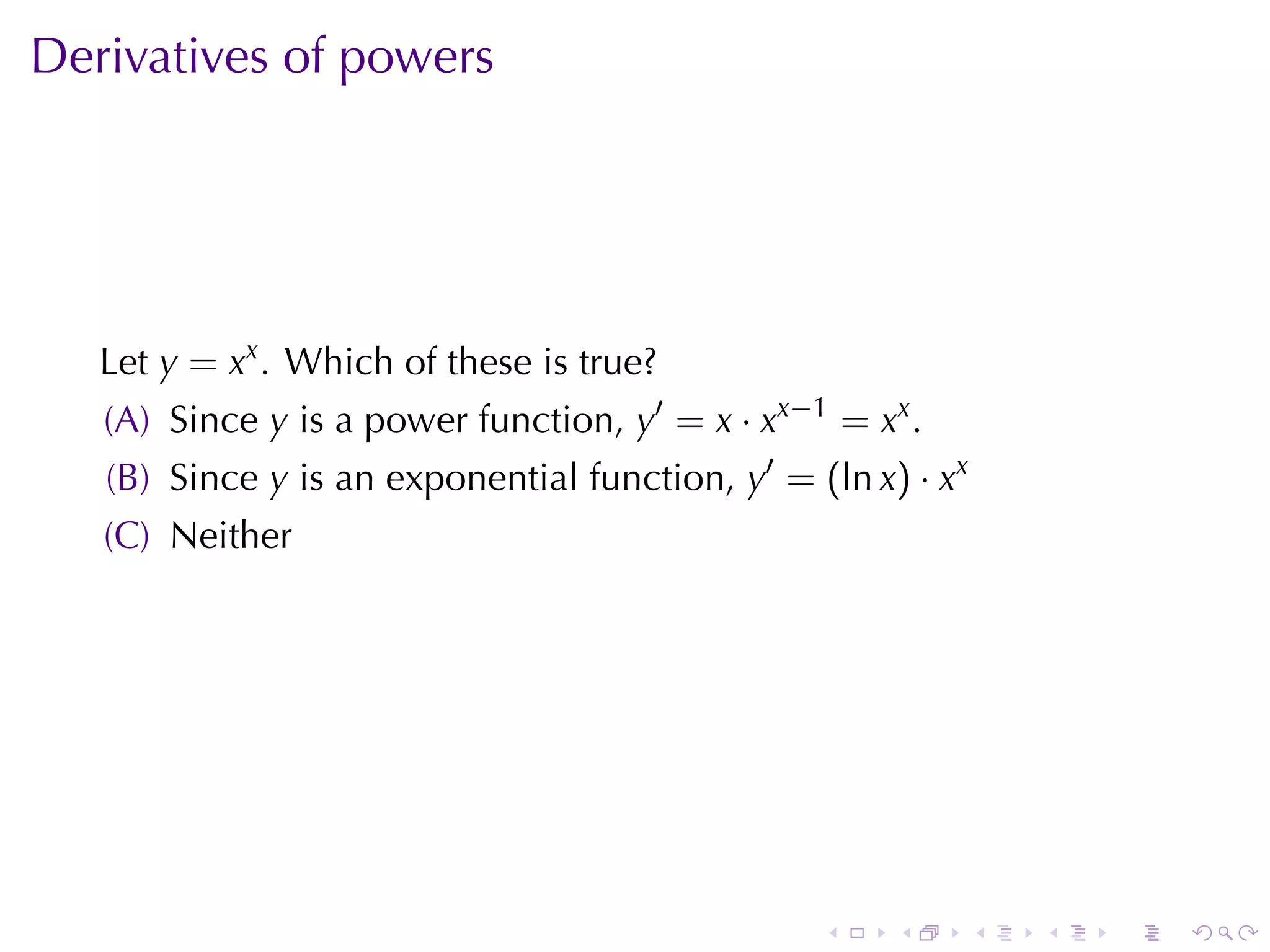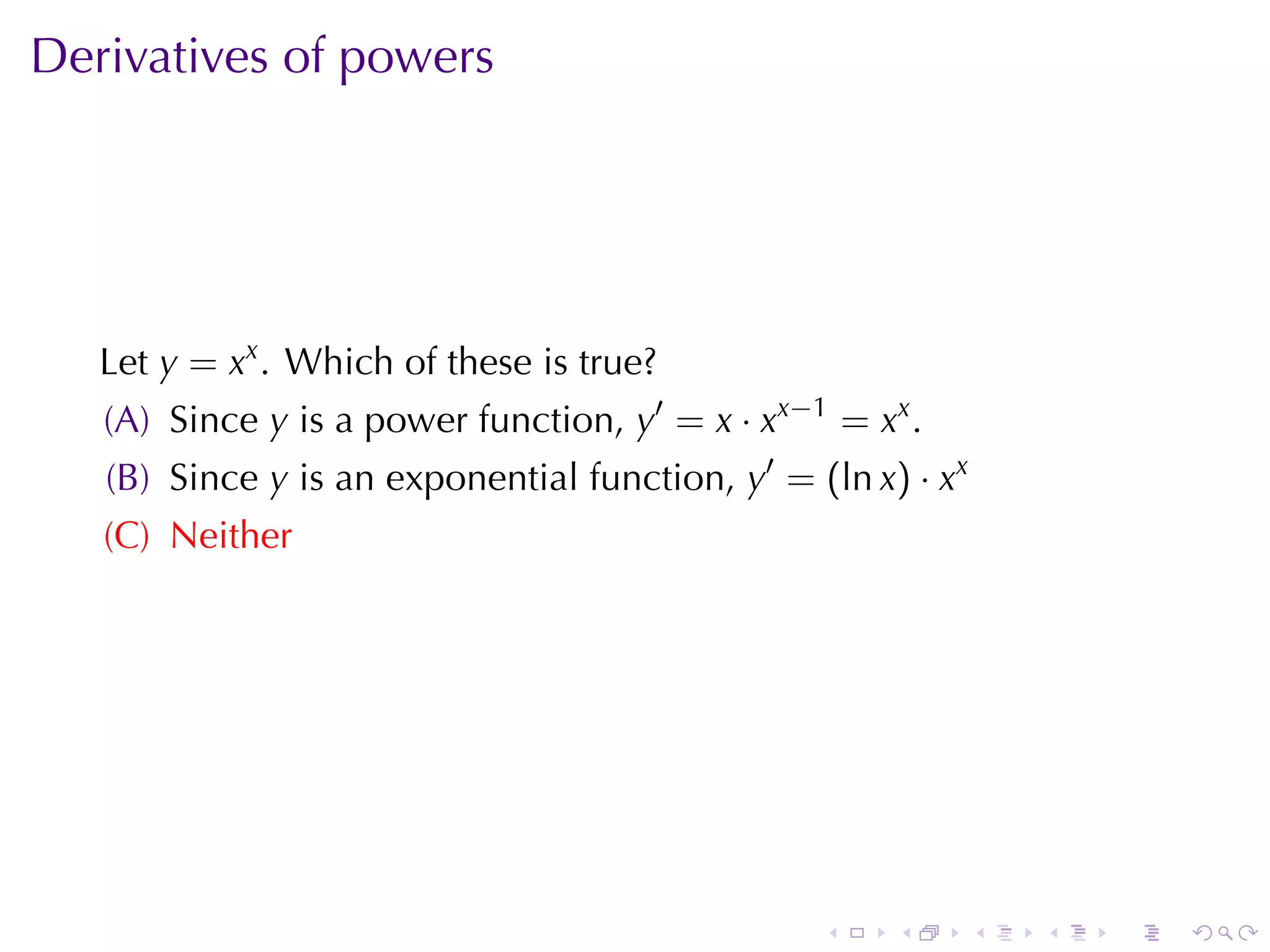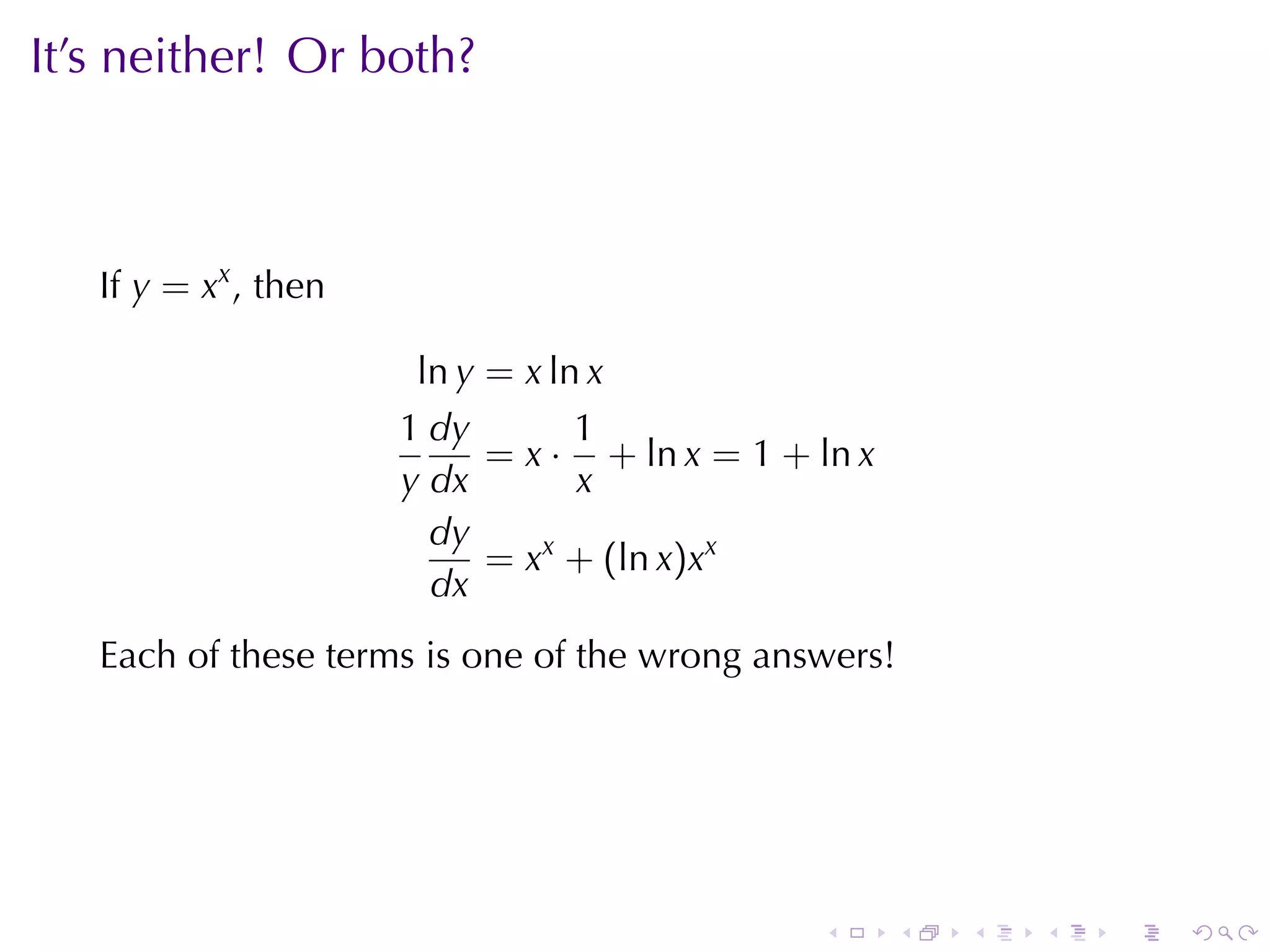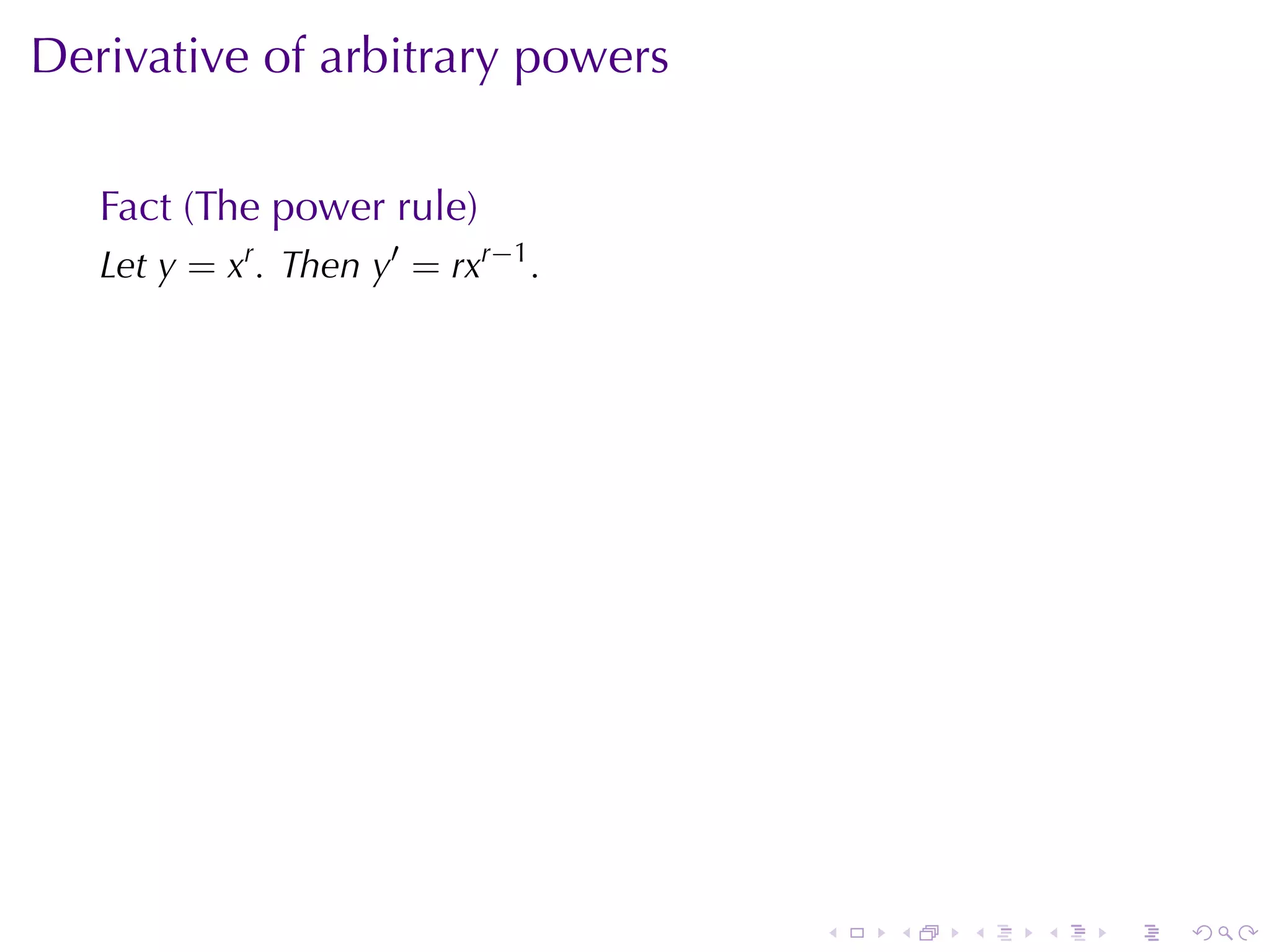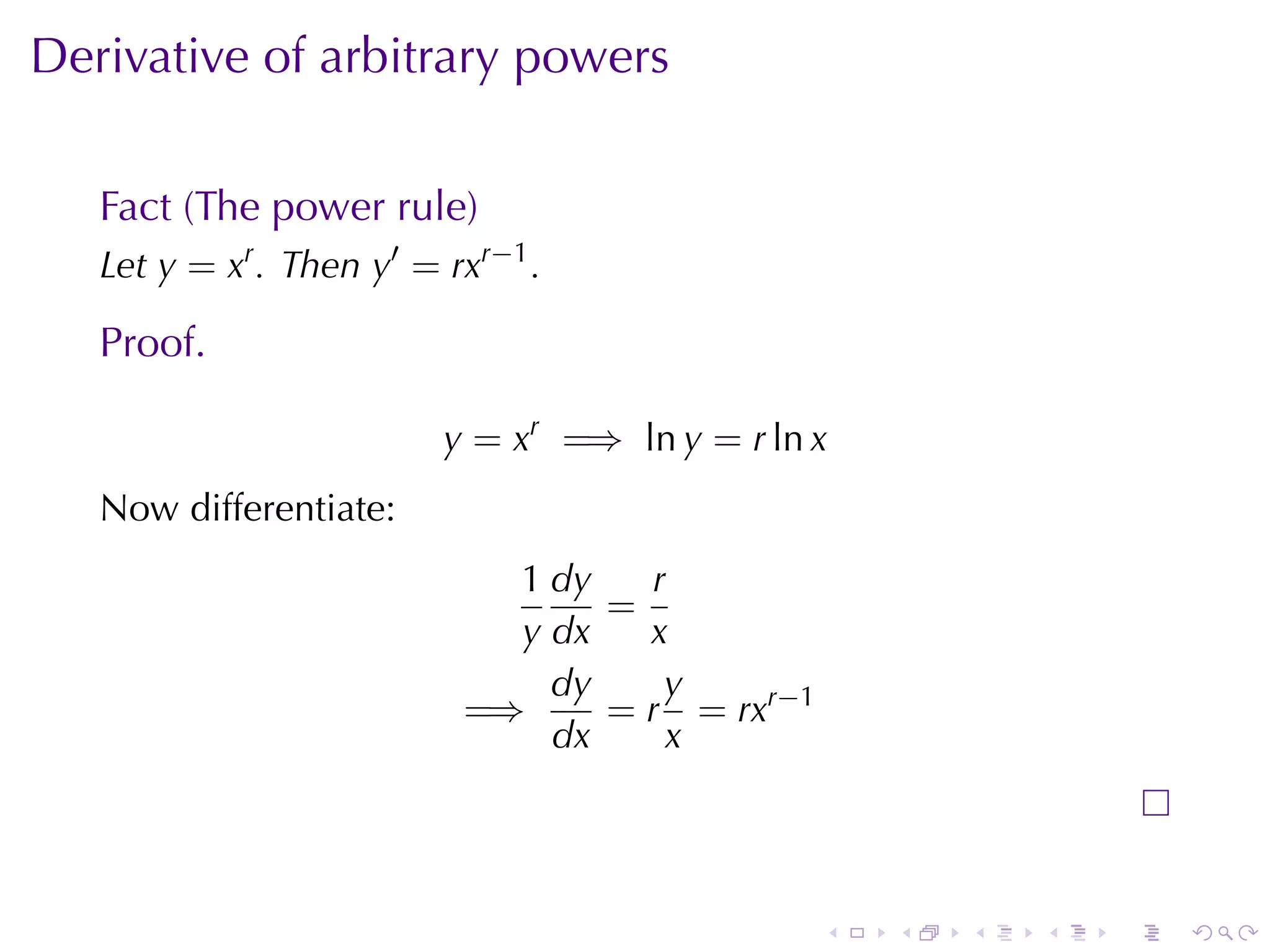The document discusses the derivatives of exponential and logarithmic functions, outlining key concepts such as the derivative of the natural exponential function, the natural logarithm, and various rules for differentiating exponential and logarithmic expressions. It emphasizes that the derivative of an exponential function is proportional to the function itself and provides examples for finding specific derivatives. Additionally, the document covers techniques like logarithmic differentiation and the power rule for irrational powers.
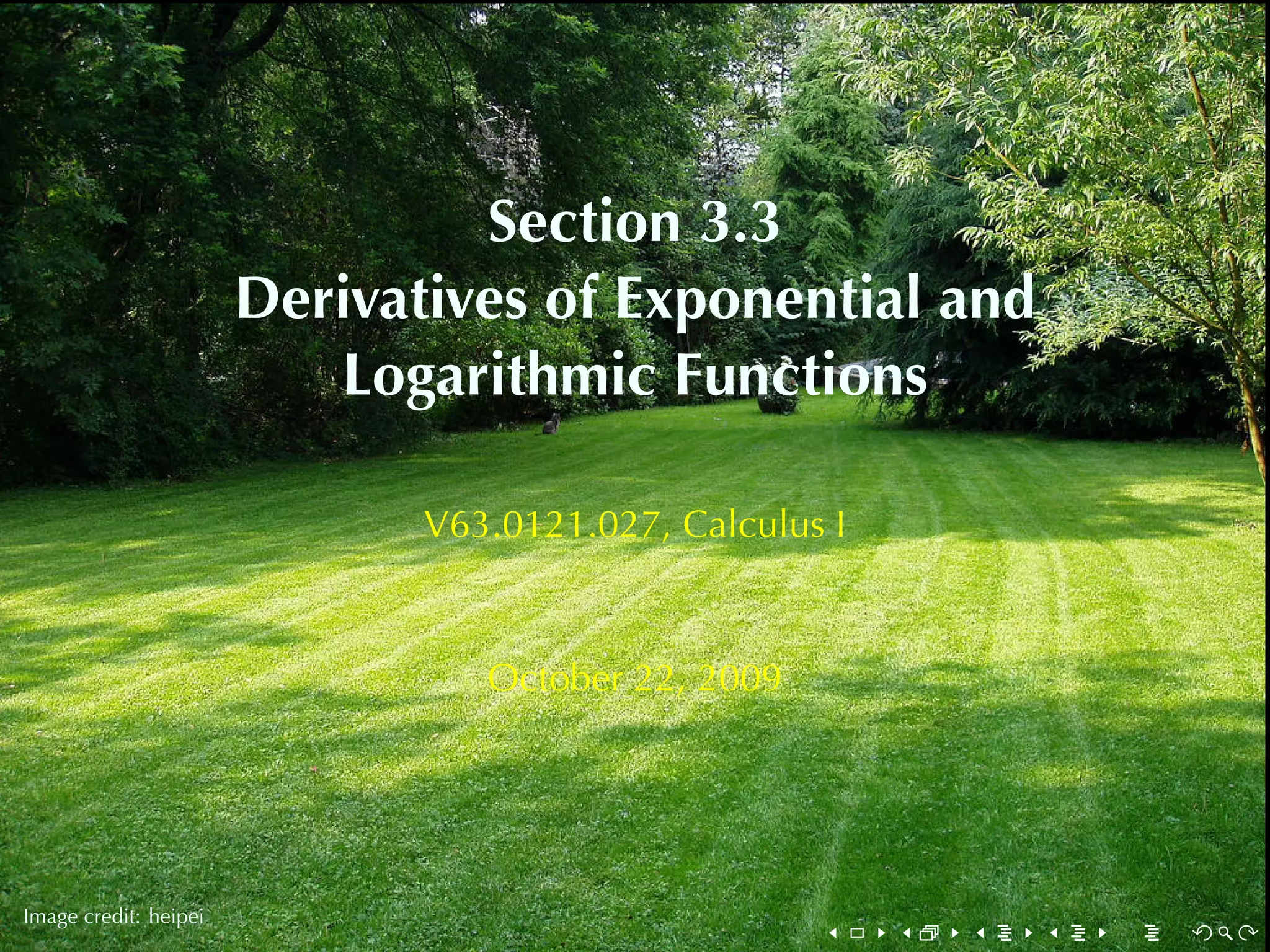
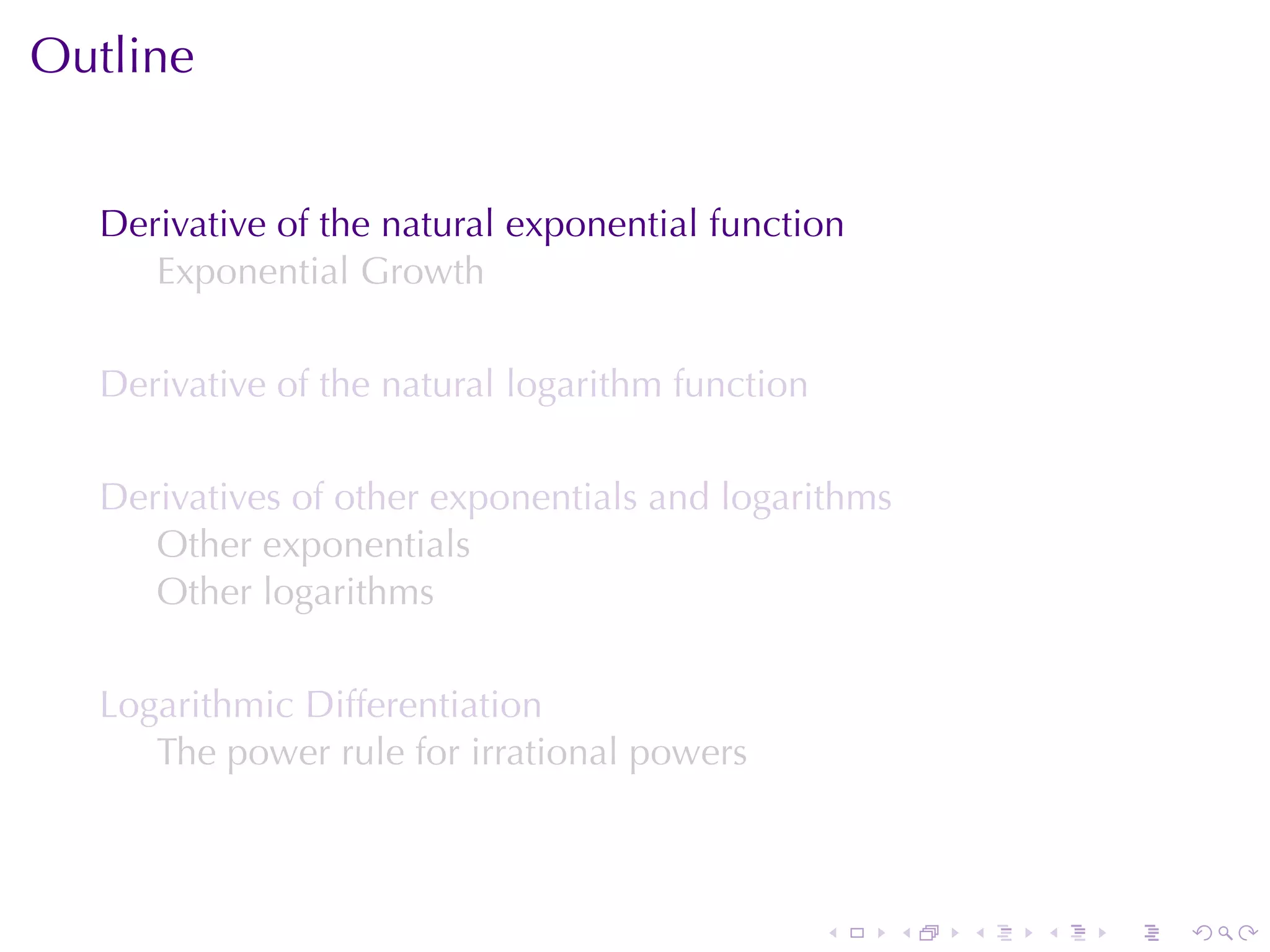
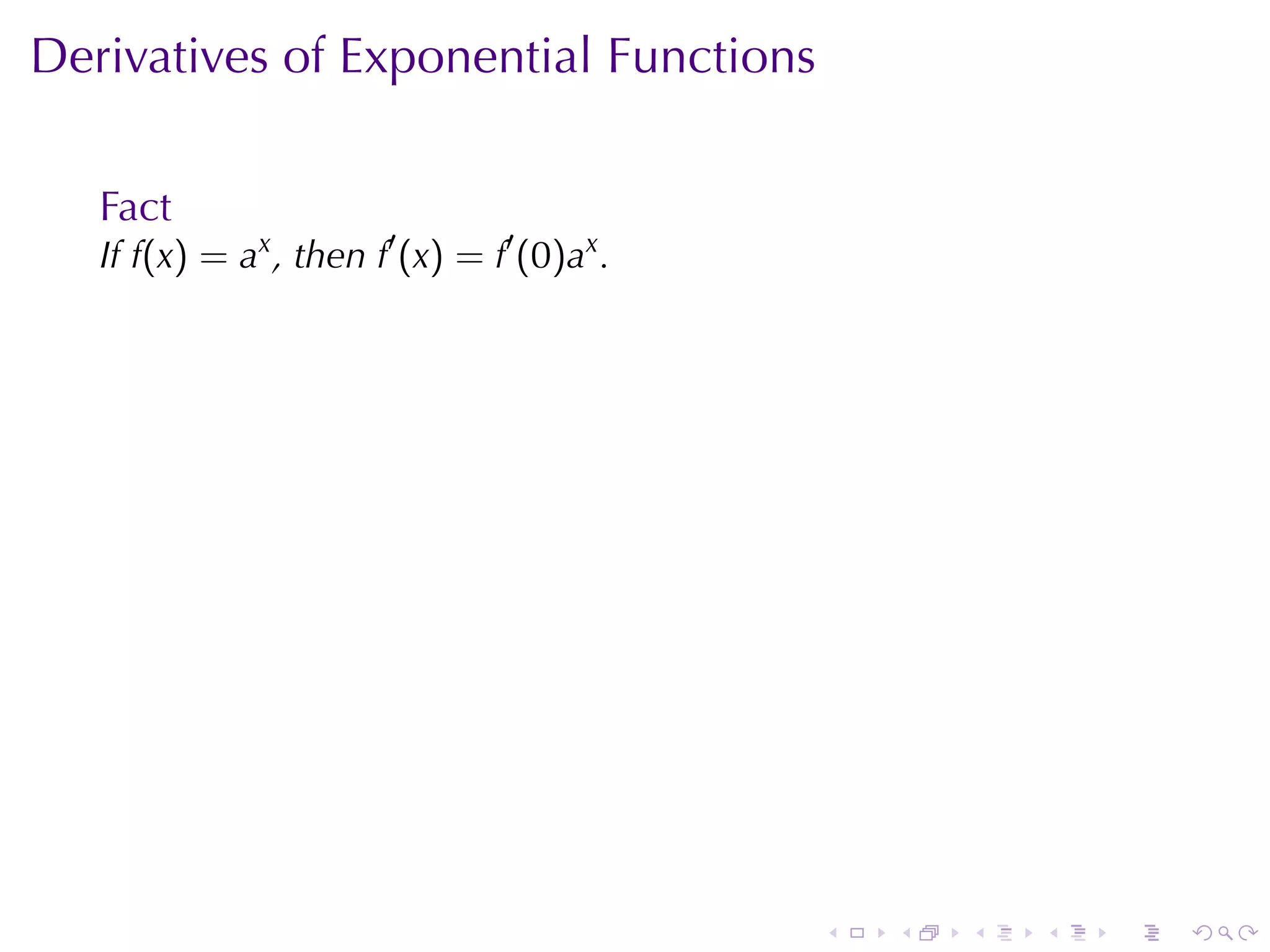
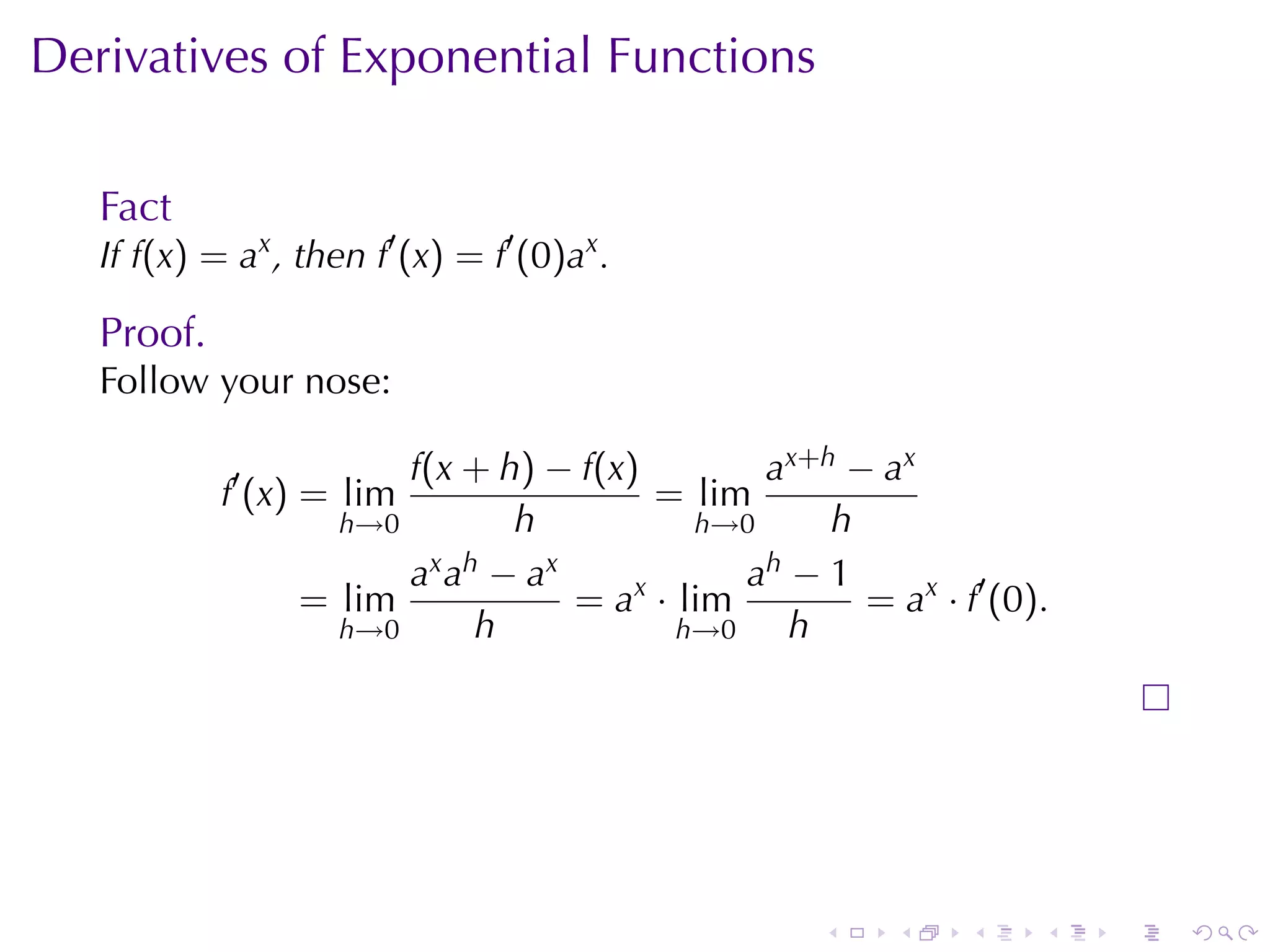
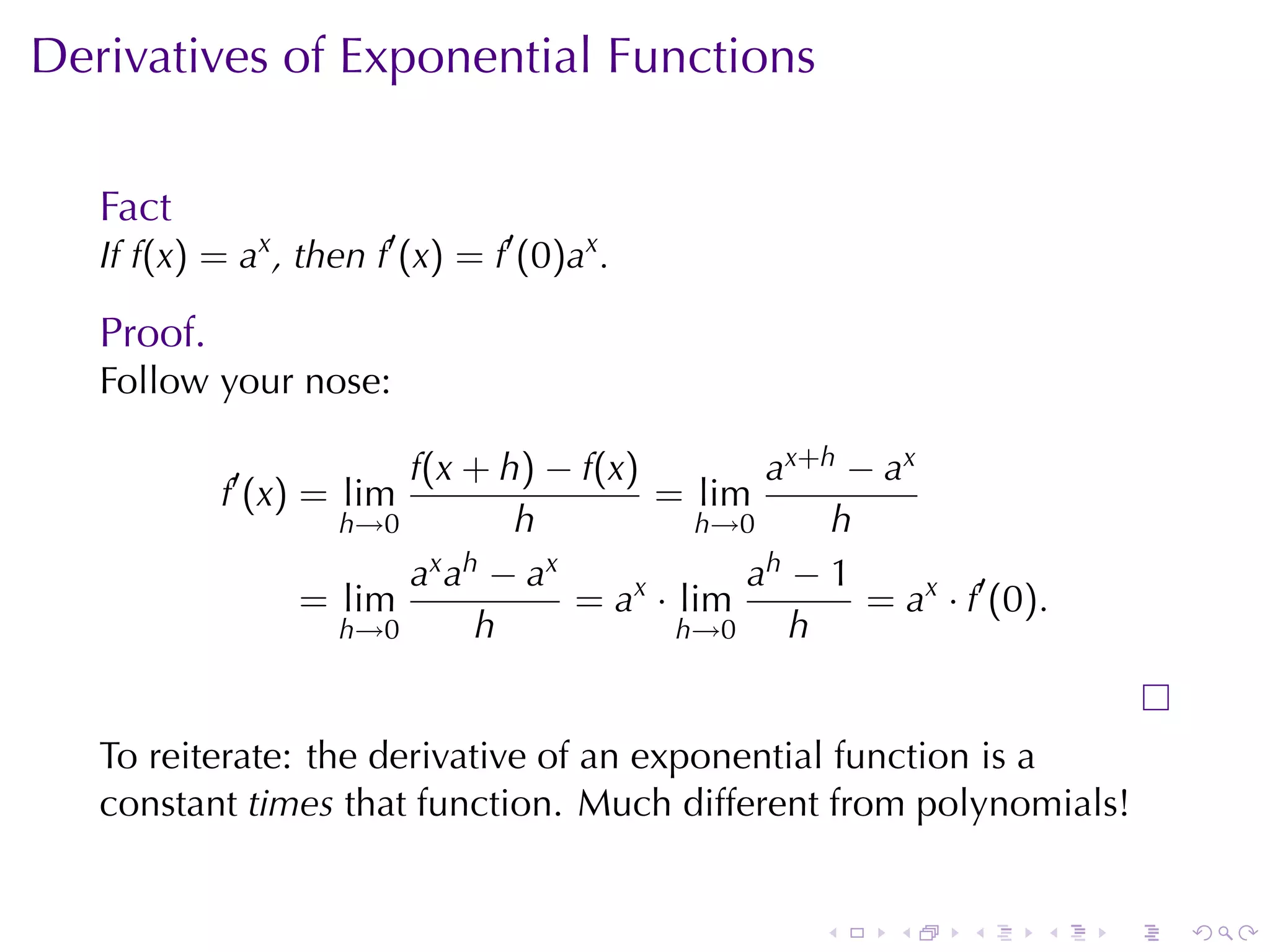
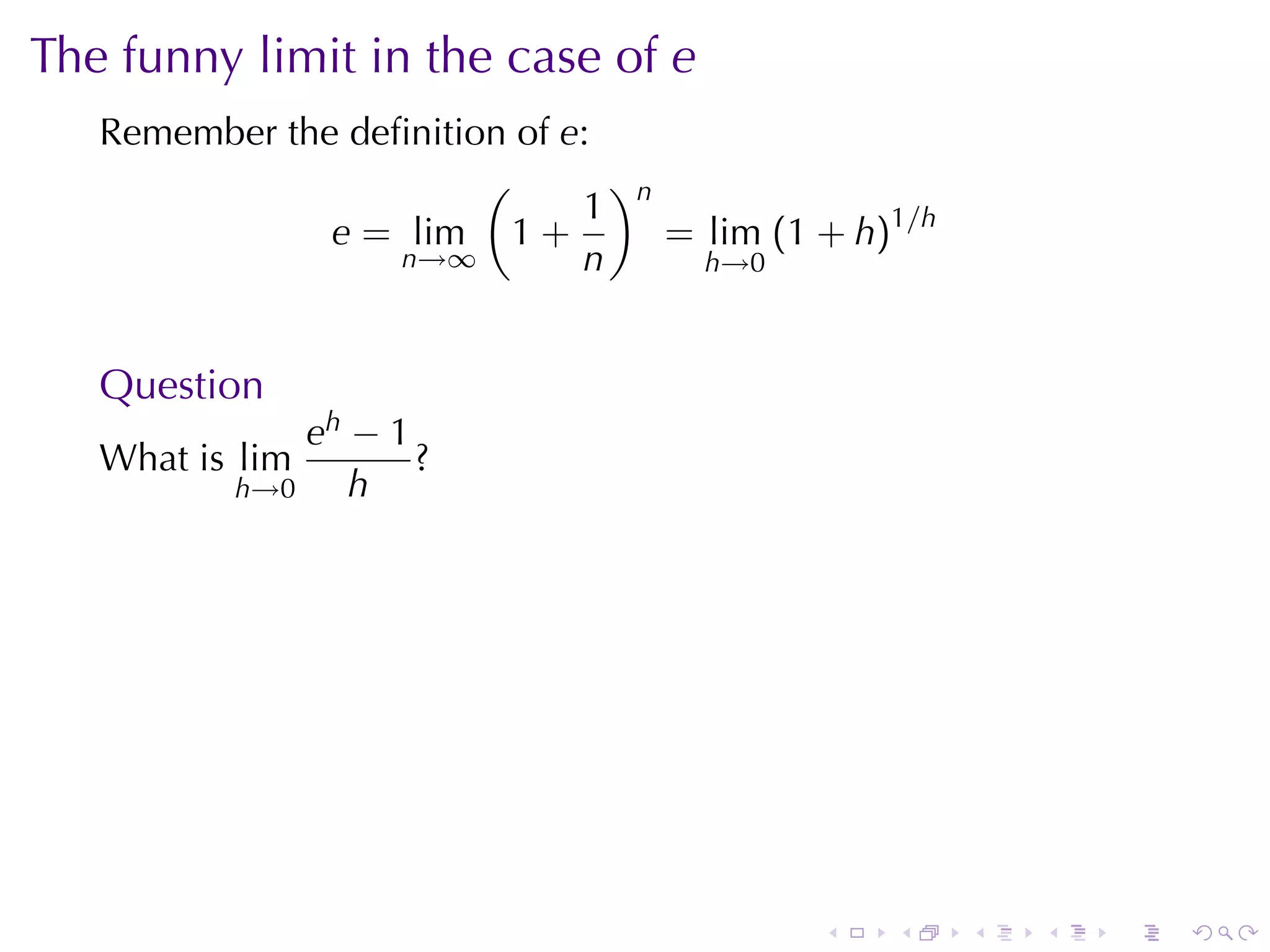
![The funny limit in the case of e
Remember the definition of e:
( )
1 n
e = lim 1 + = lim (1 + h)1/h
n→∞ n h→0
Question
eh − 1
What is lim ?
h→0 h
Answer
If h is small enough, e ≈ (1 + h)1/h . So
[ ]h
eh − 1 (1 + h)1/h − 1 (1 + h) − 1 h
≈ = = =1
h h h h
. . . . . .](https://image.slidesharecdn.com/lesson16-derivativesoflogarithmicandexponentialfunctions027slides-091023082151-phpapp01/75/Lesson-16-Derivatives-of-Logarithmic-and-Exponential-Functions-7-2048.jpg)
![The funny limit in the case of e
Remember the definition of e:
( )
1 n
e = lim 1 + = lim (1 + h)1/h
n→∞ n h→0
Question
eh − 1
What is lim ?
h→0 h
Answer
If h is small enough, e ≈ (1 + h)1/h . So
[ ]h
eh − 1 (1 + h)1/h − 1 (1 + h) − 1 h
≈ = = =1
h h h h
eh − 1
So in the limit we get equality: lim =1
h→0 h
. . . . . .](https://image.slidesharecdn.com/lesson16-derivativesoflogarithmicandexponentialfunctions027slides-091023082151-phpapp01/75/Lesson-16-Derivatives-of-Logarithmic-and-Exponential-Functions-8-2048.jpg)
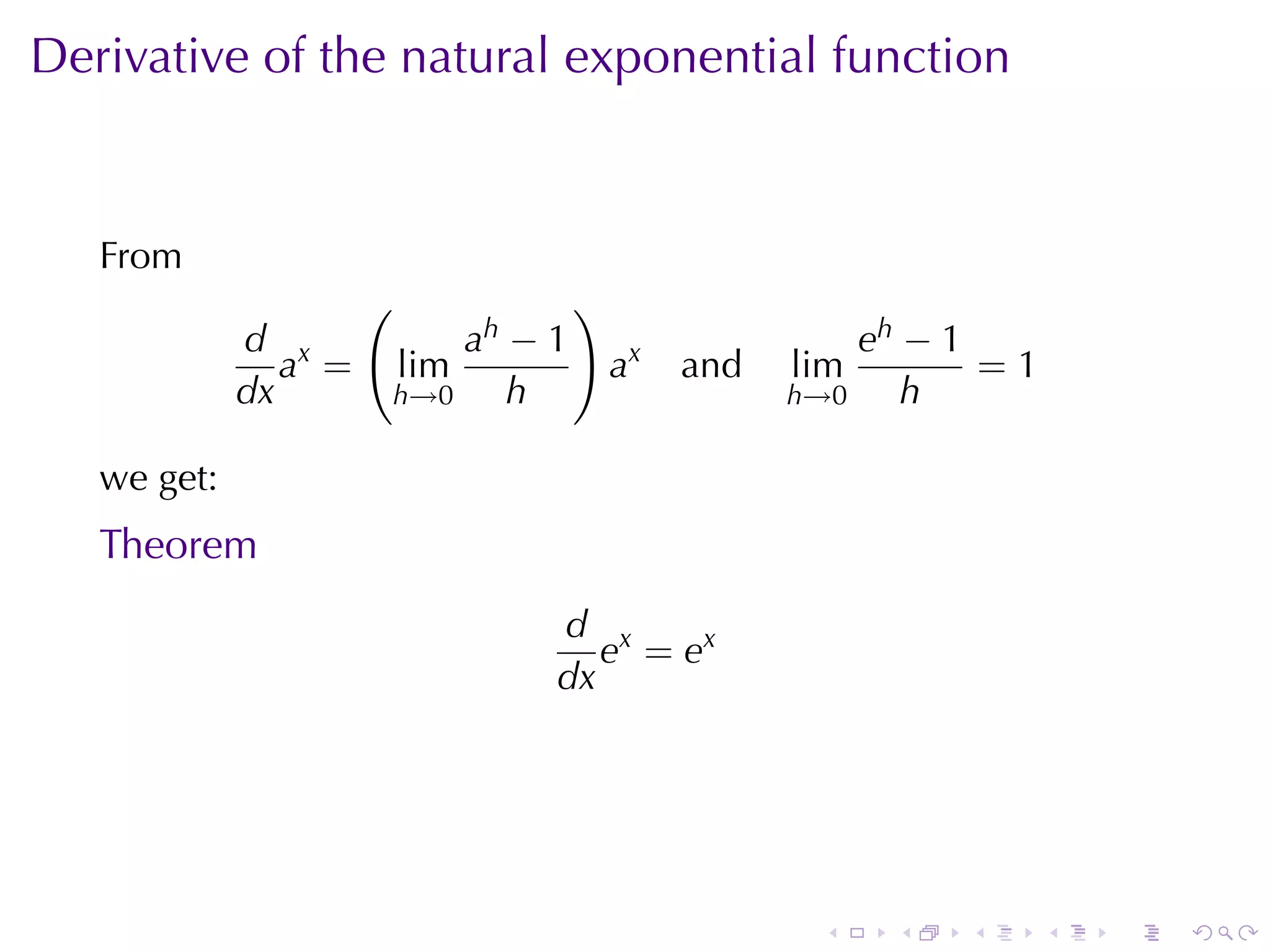
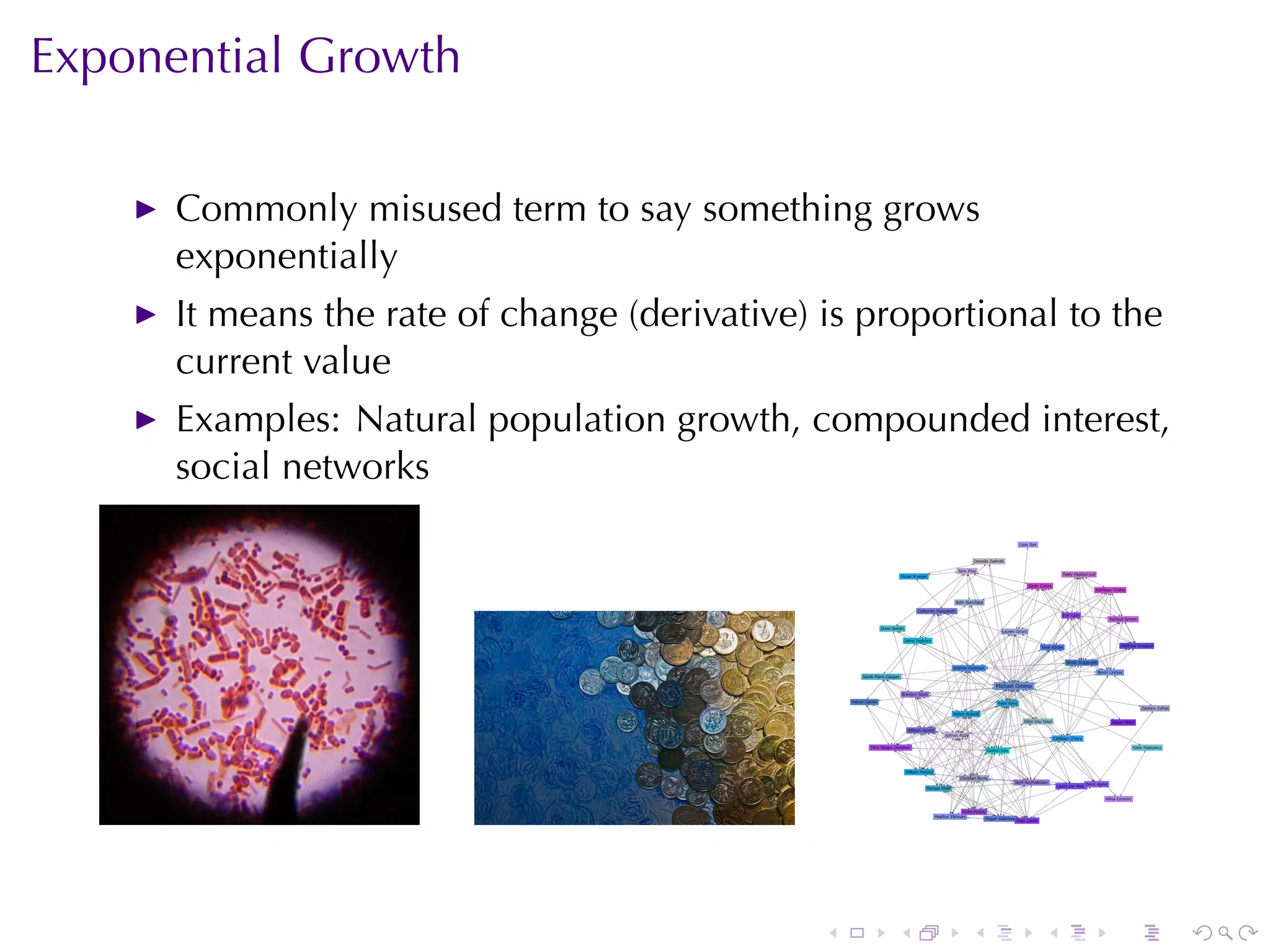
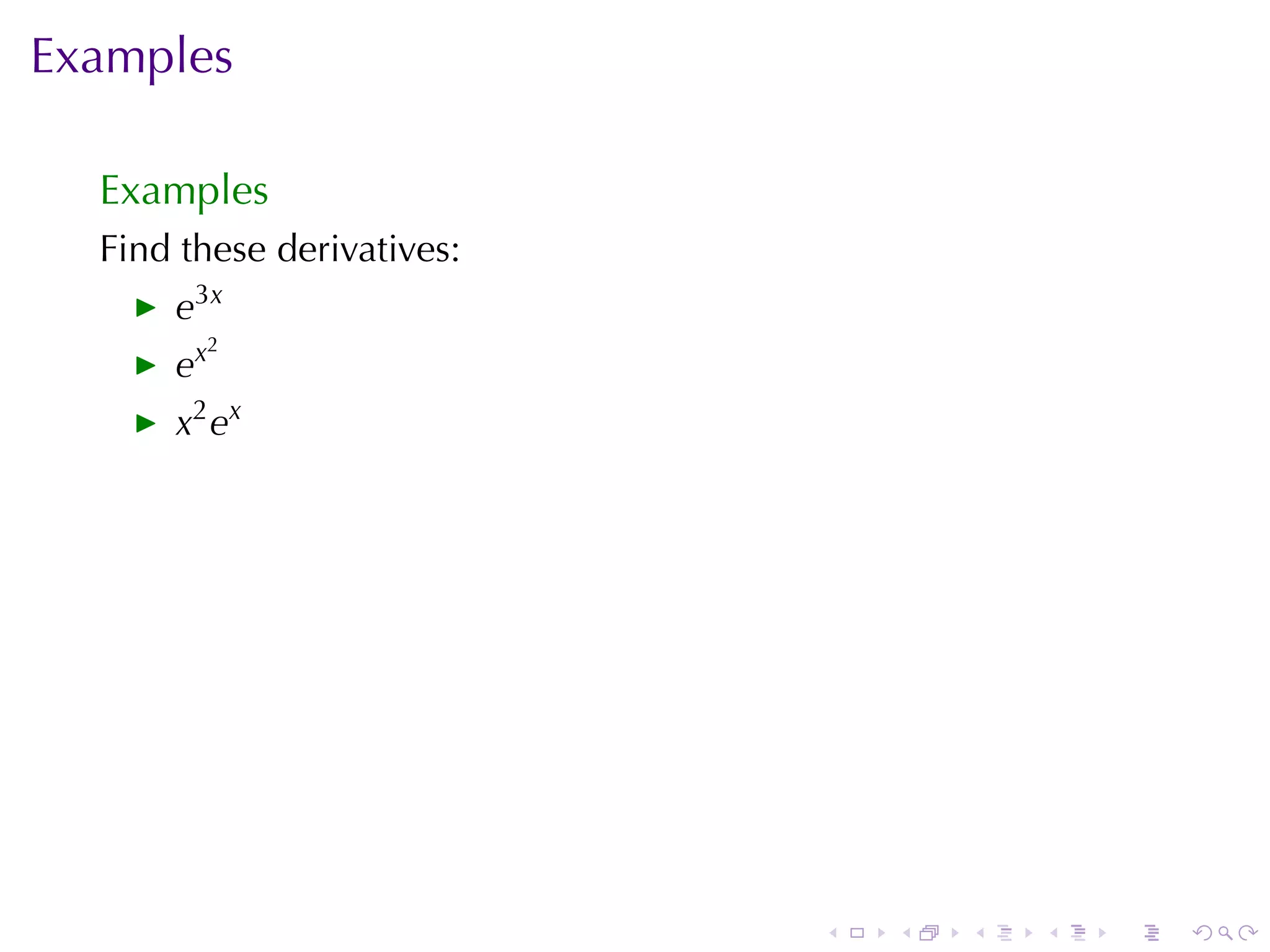
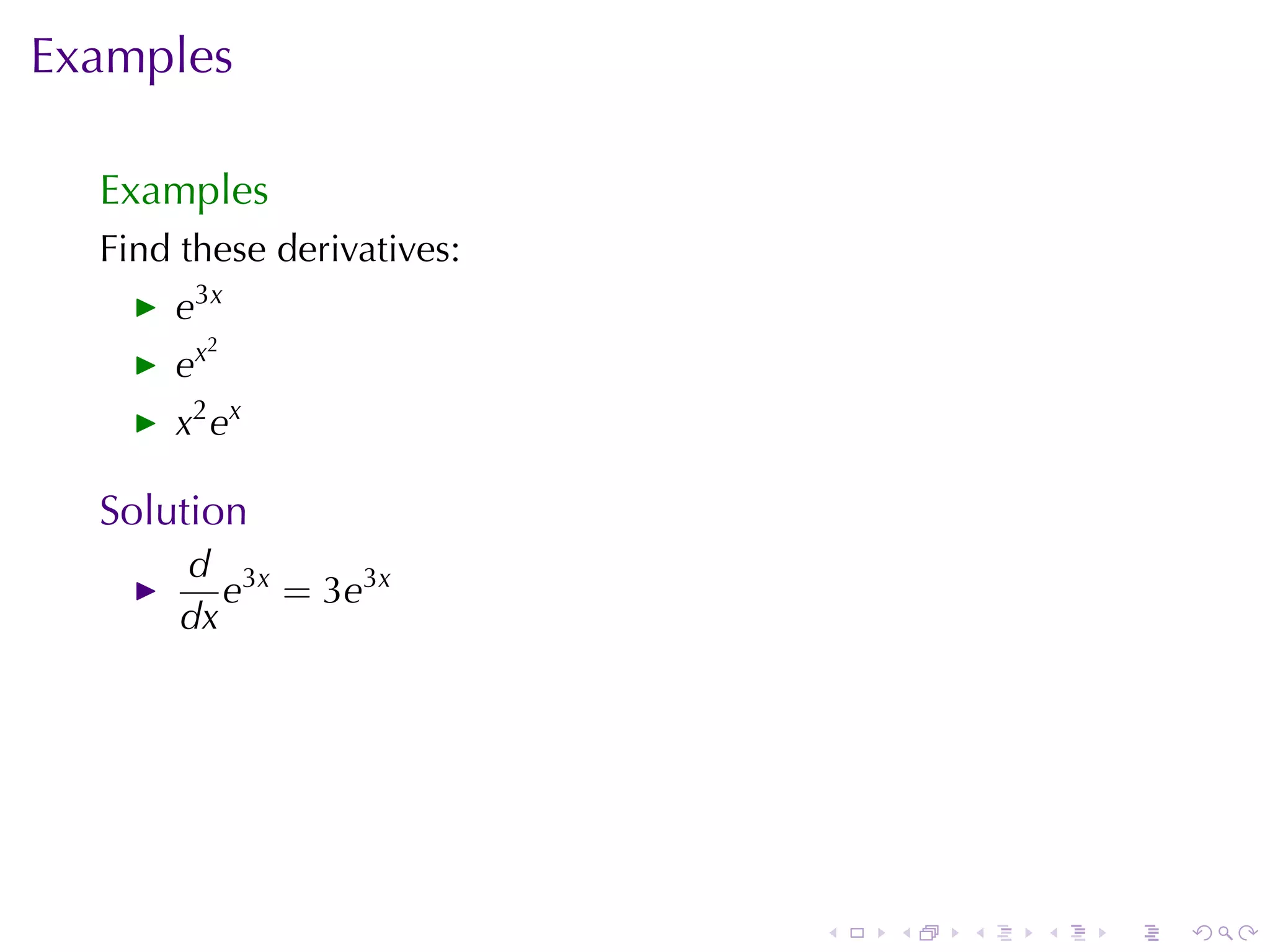
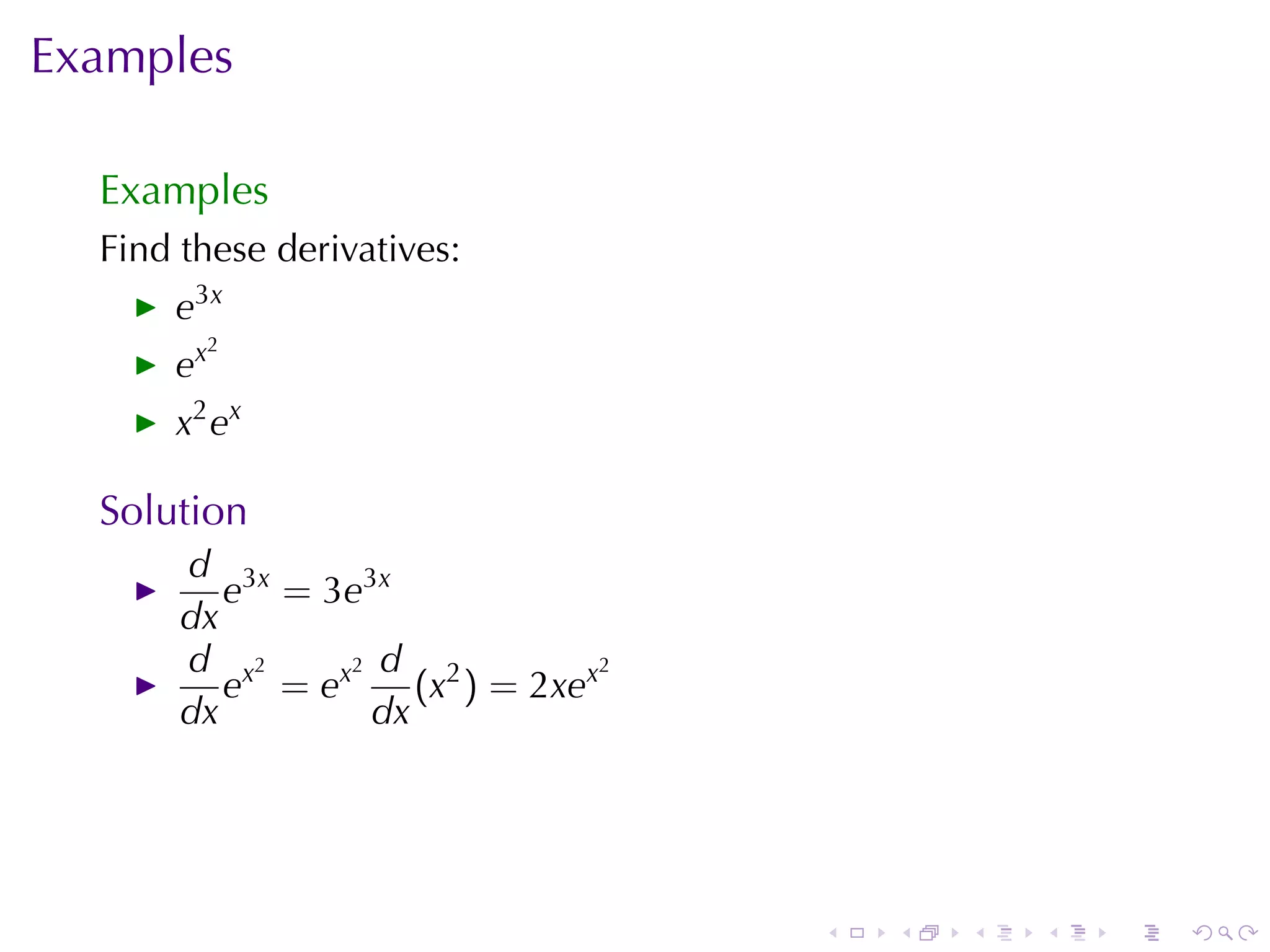

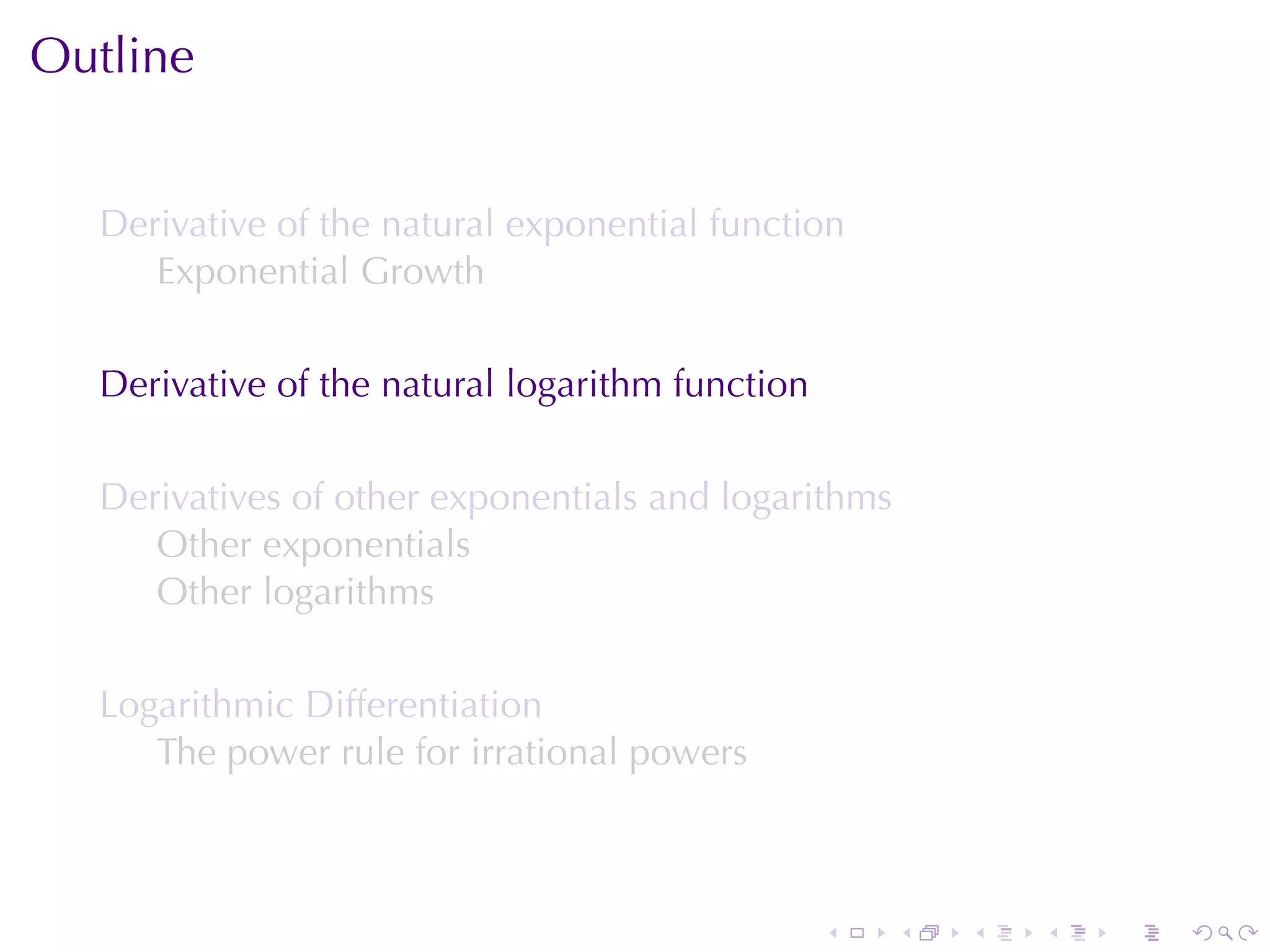
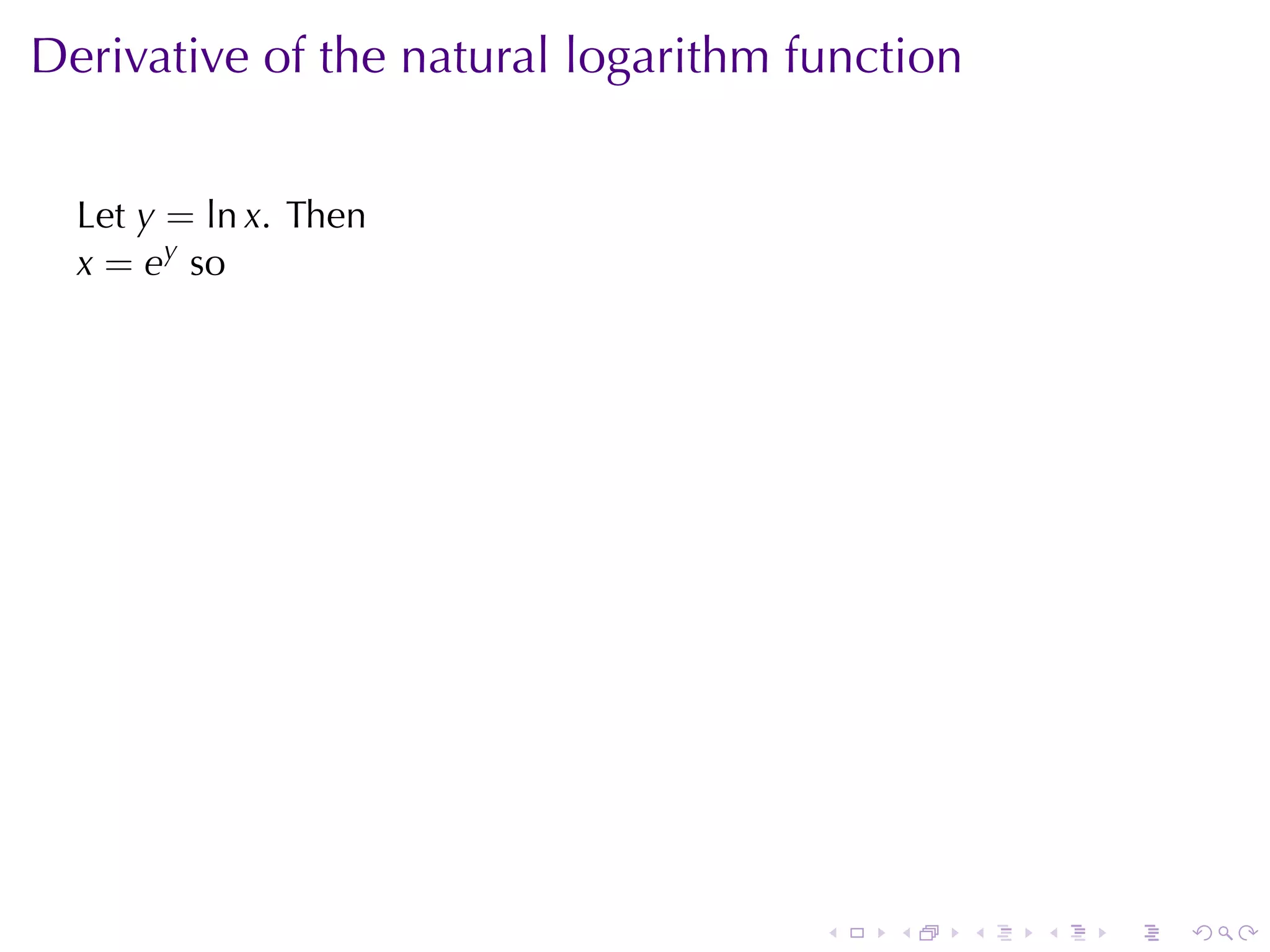
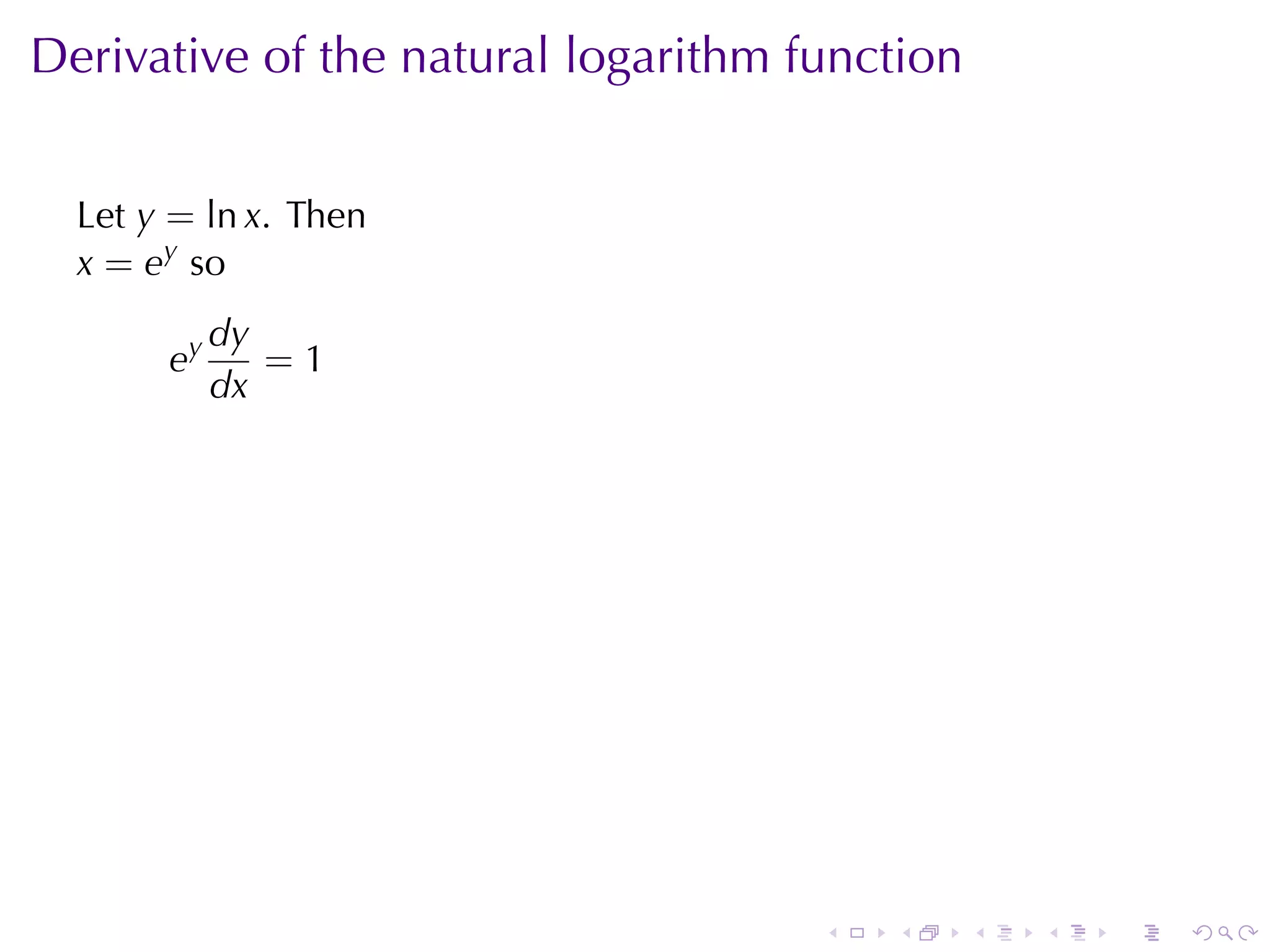
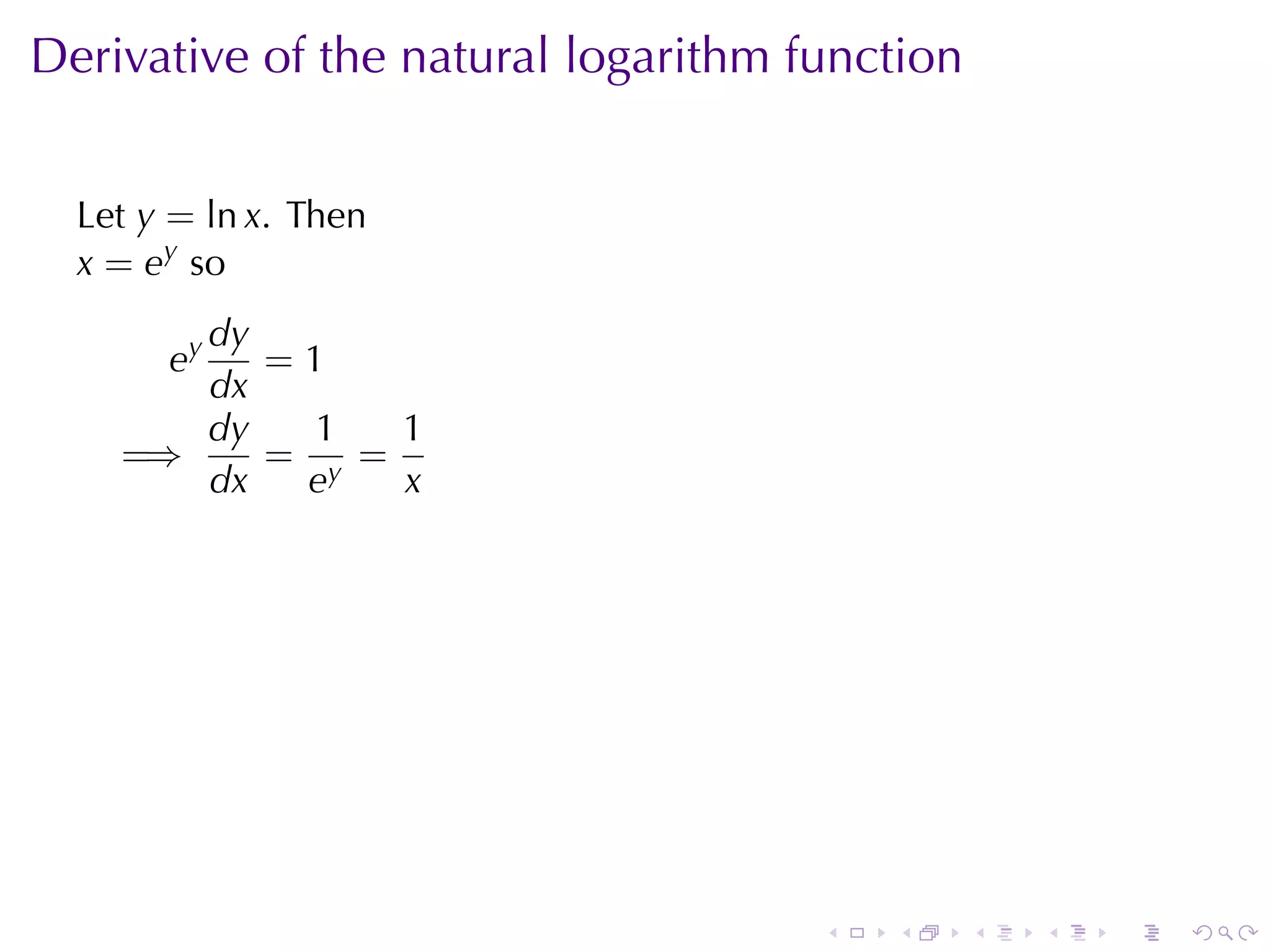

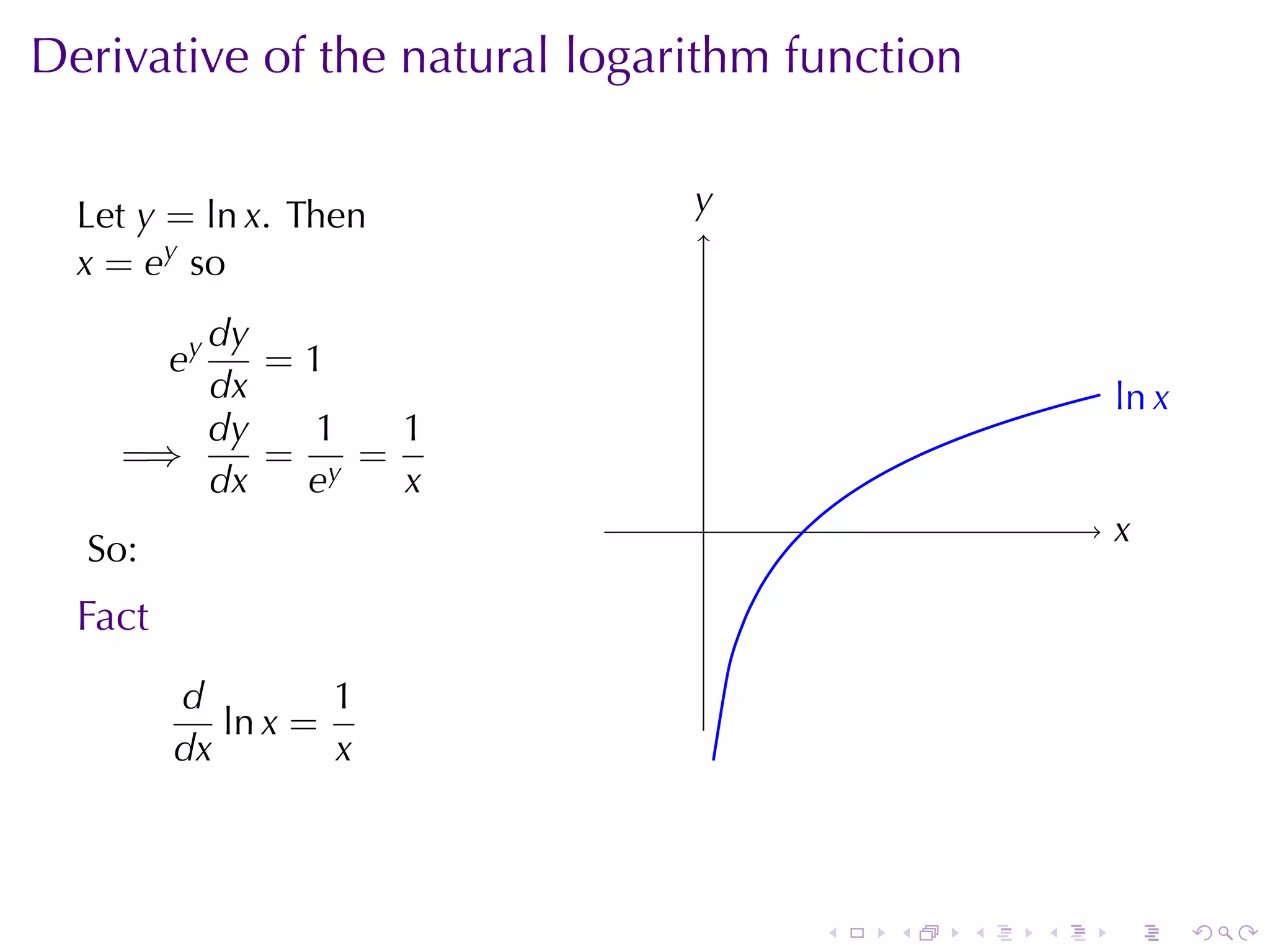
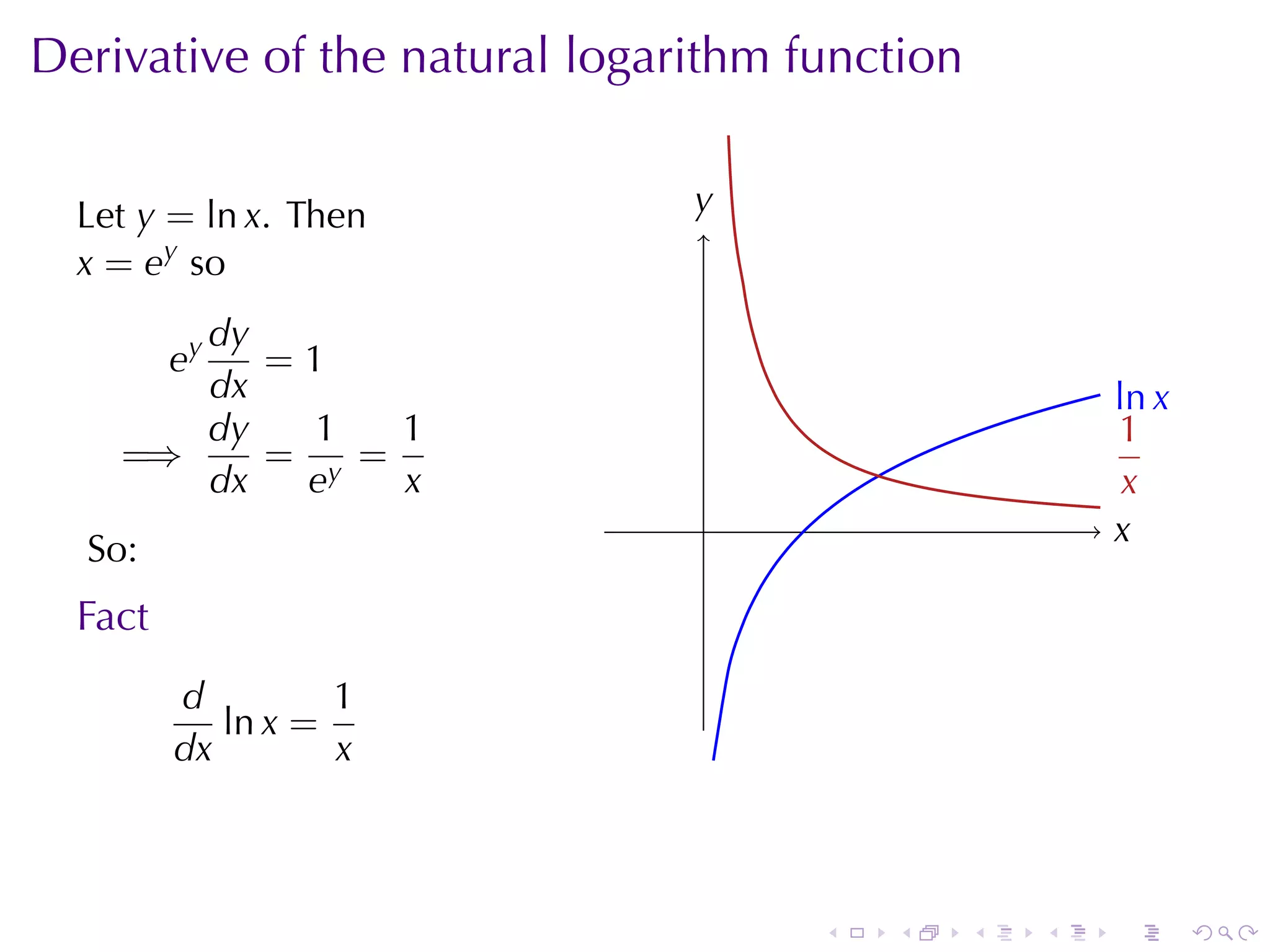
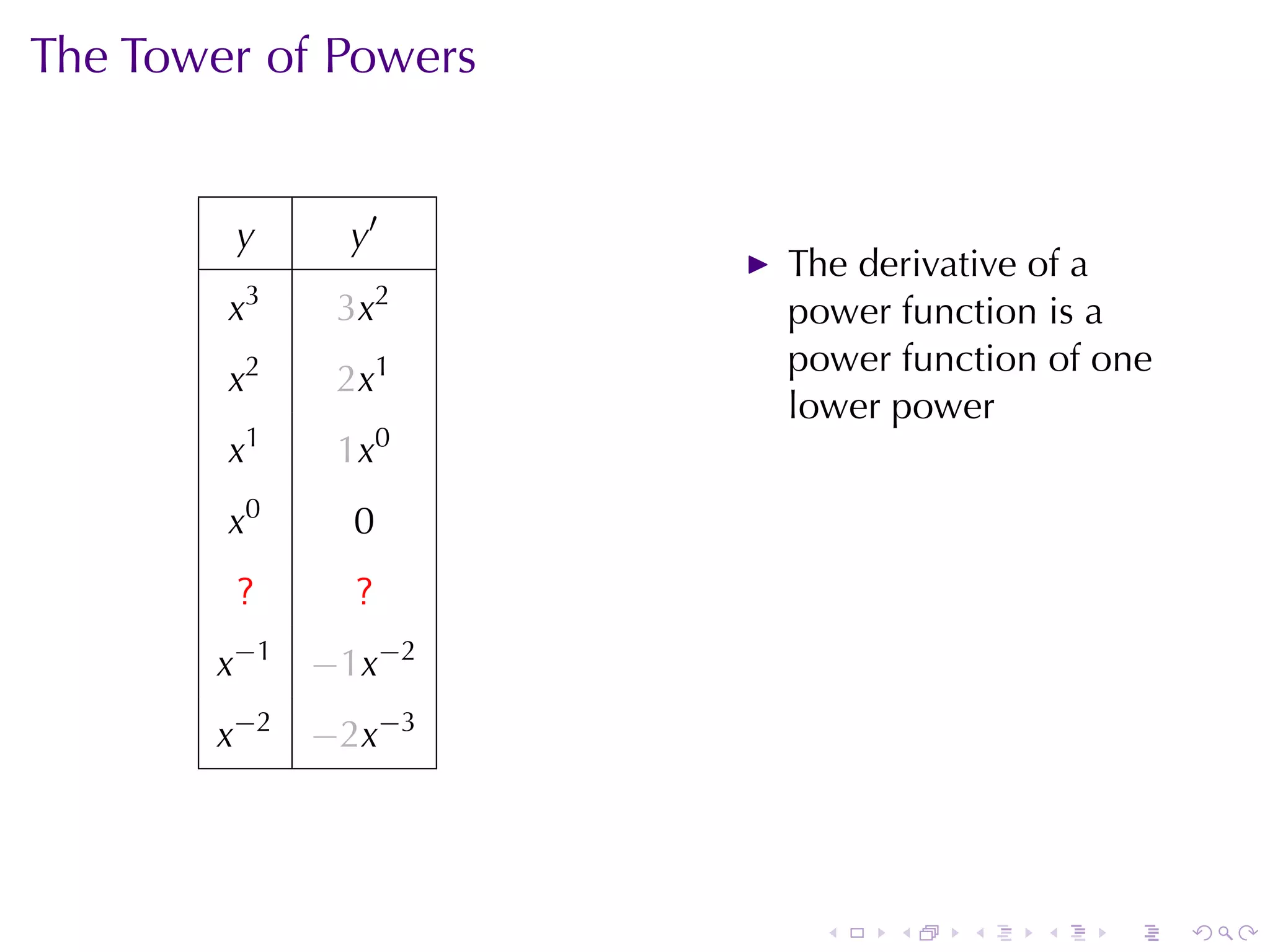
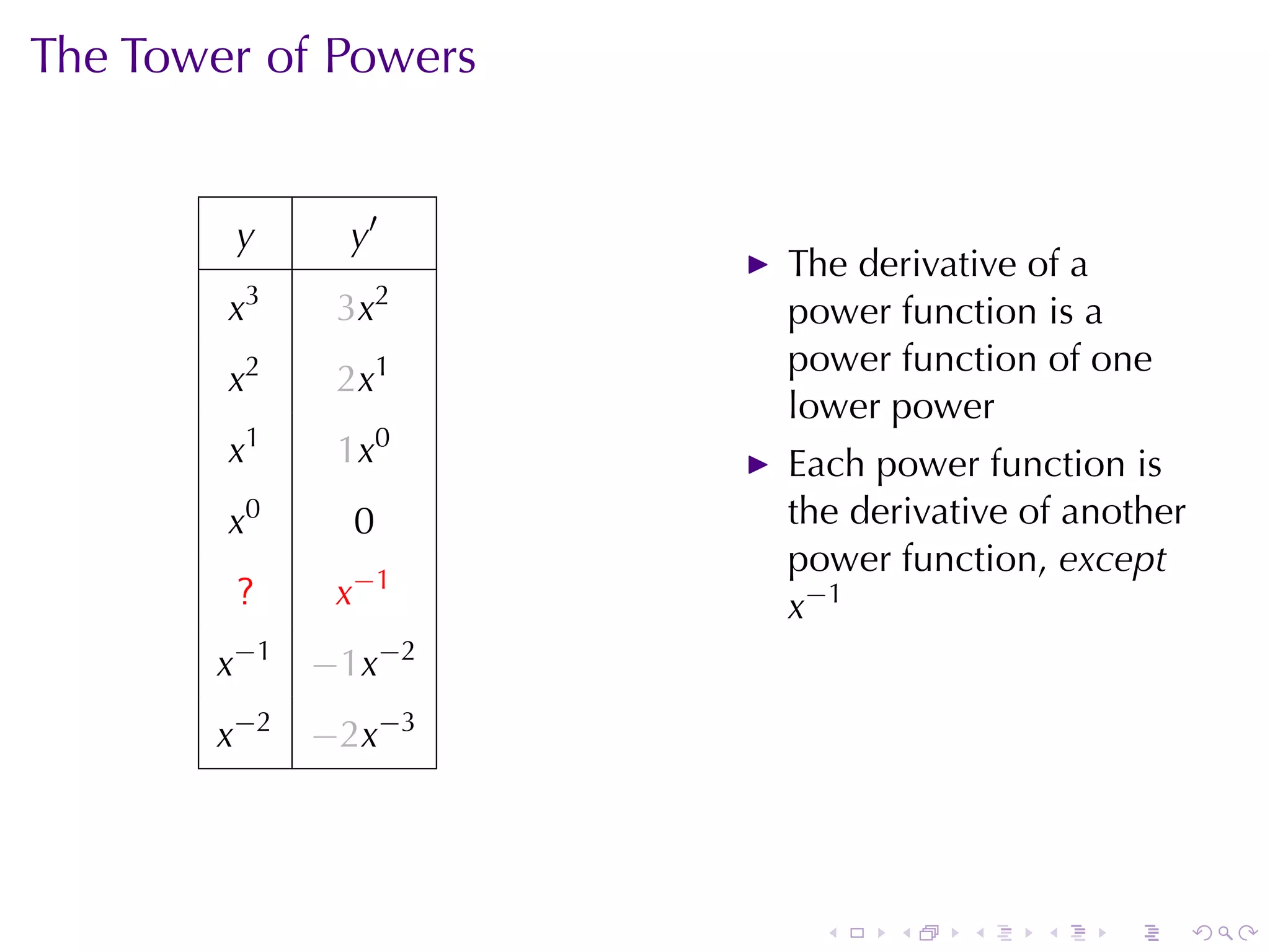
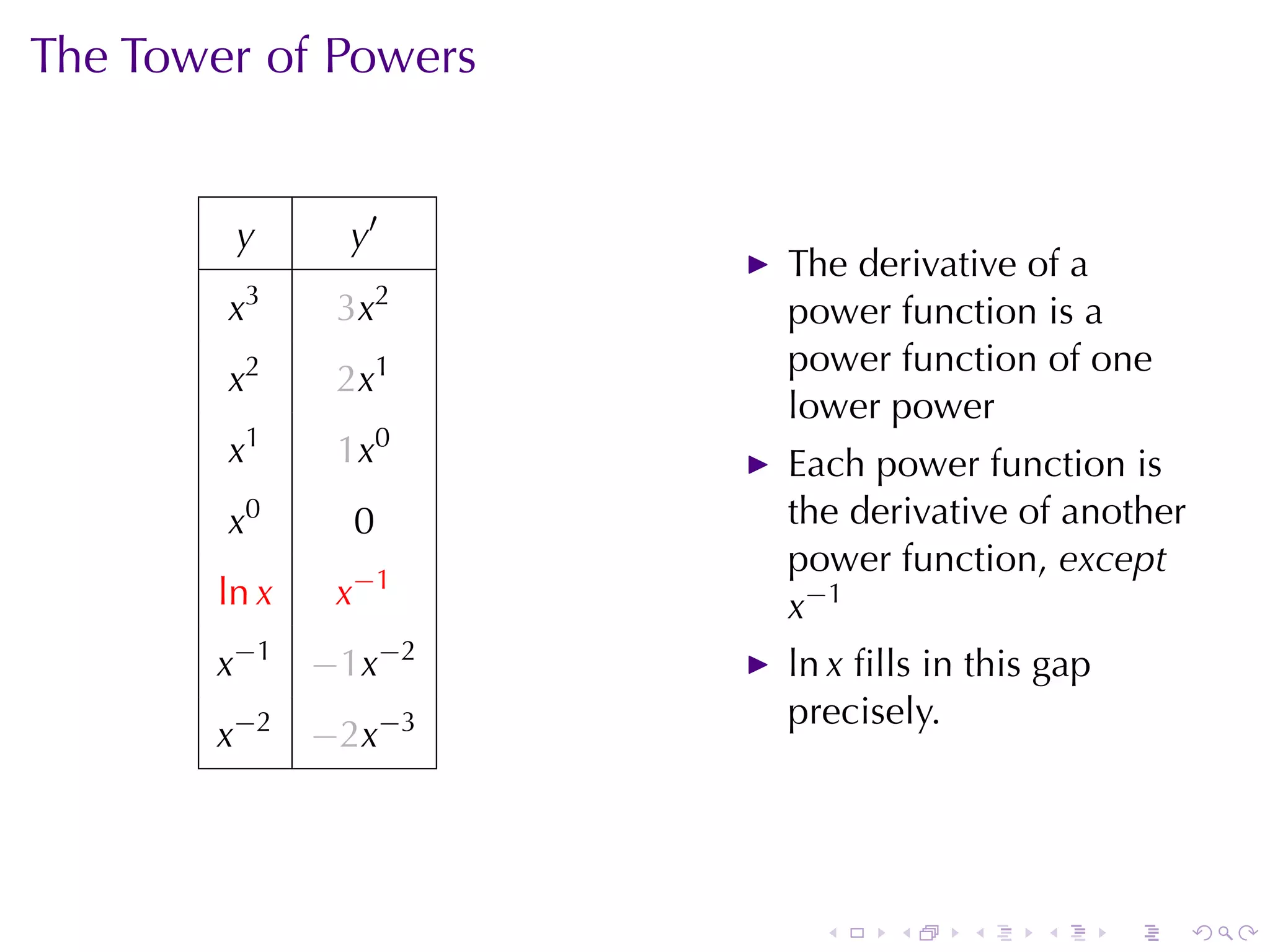
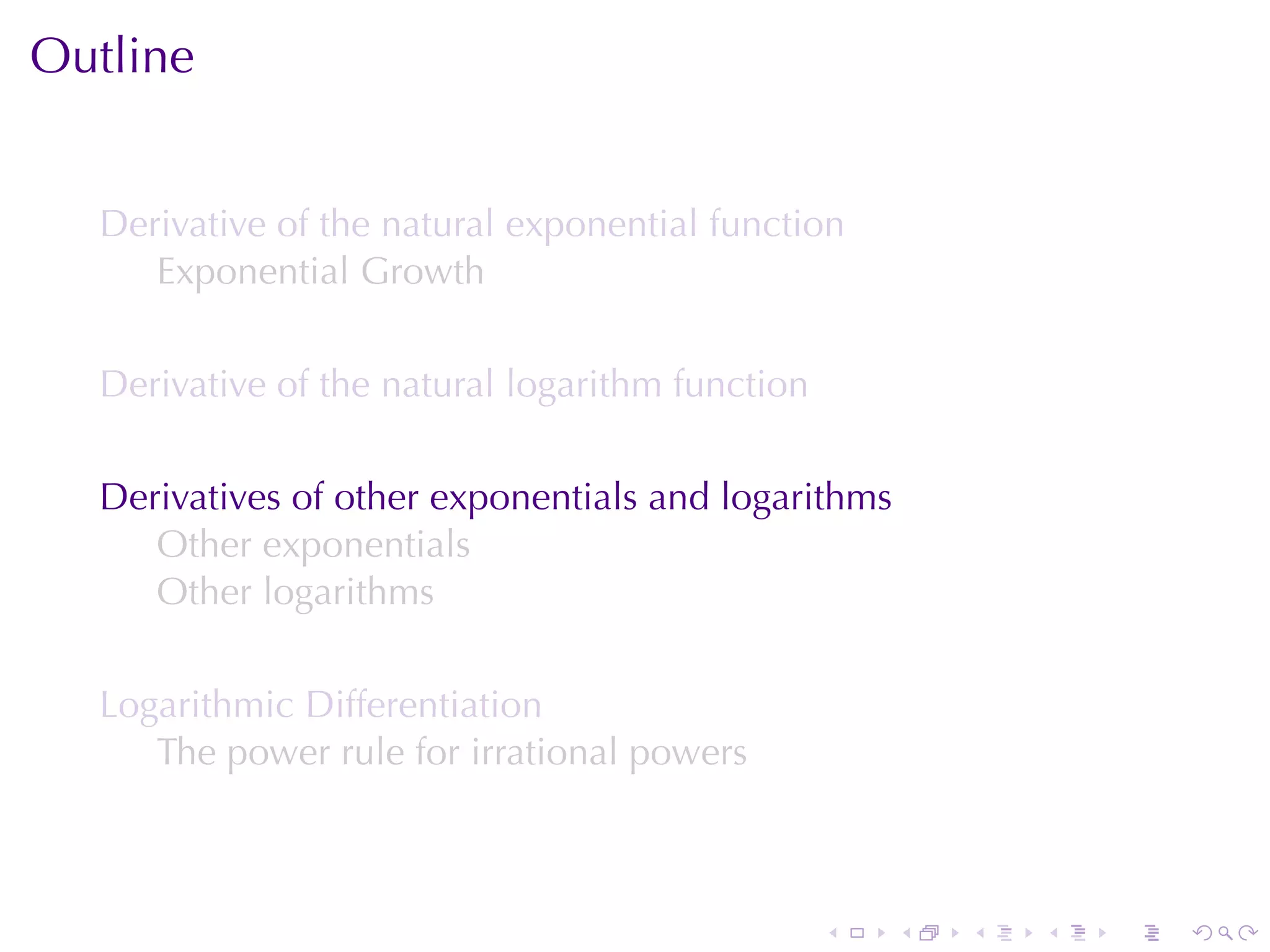
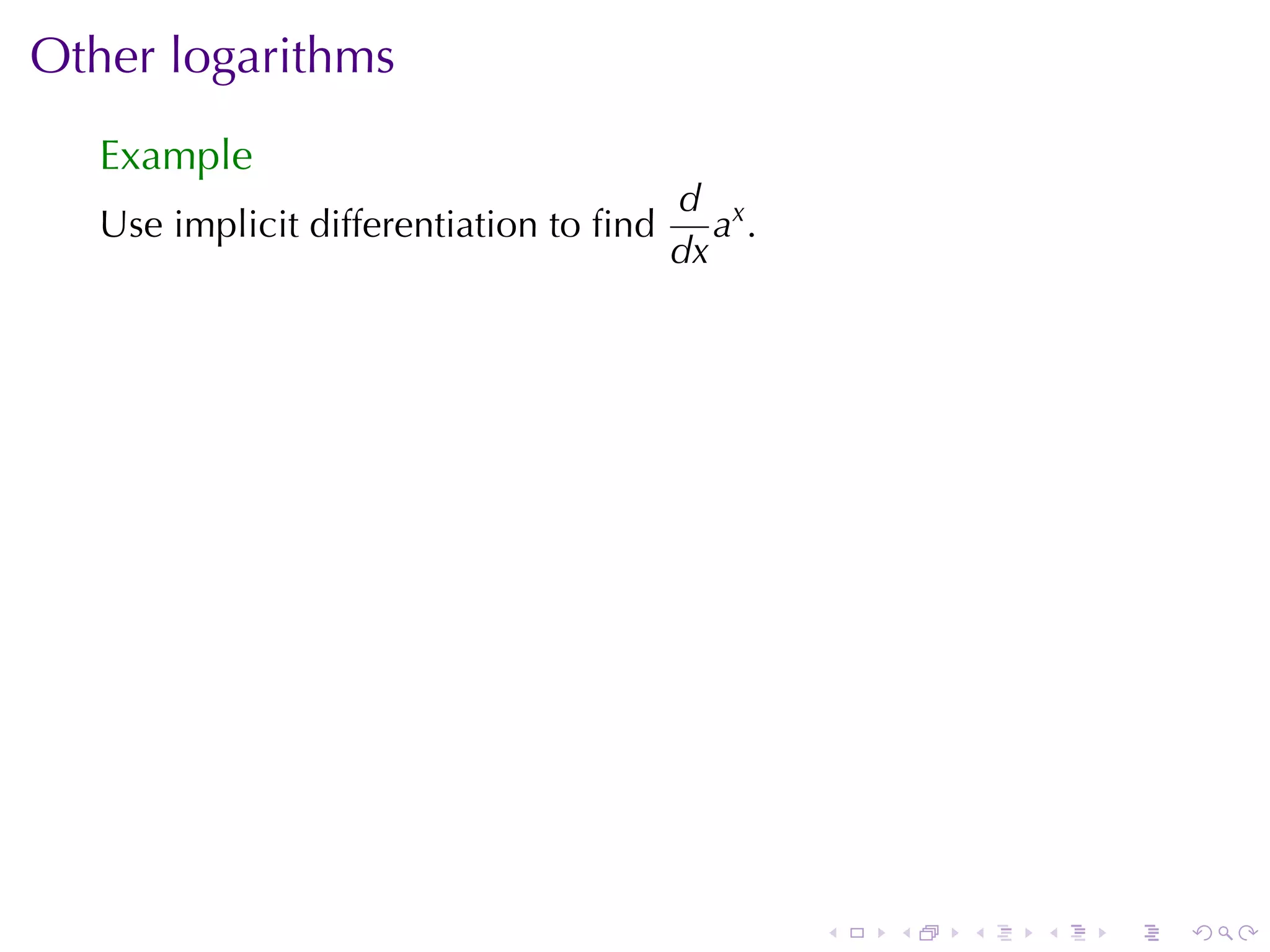
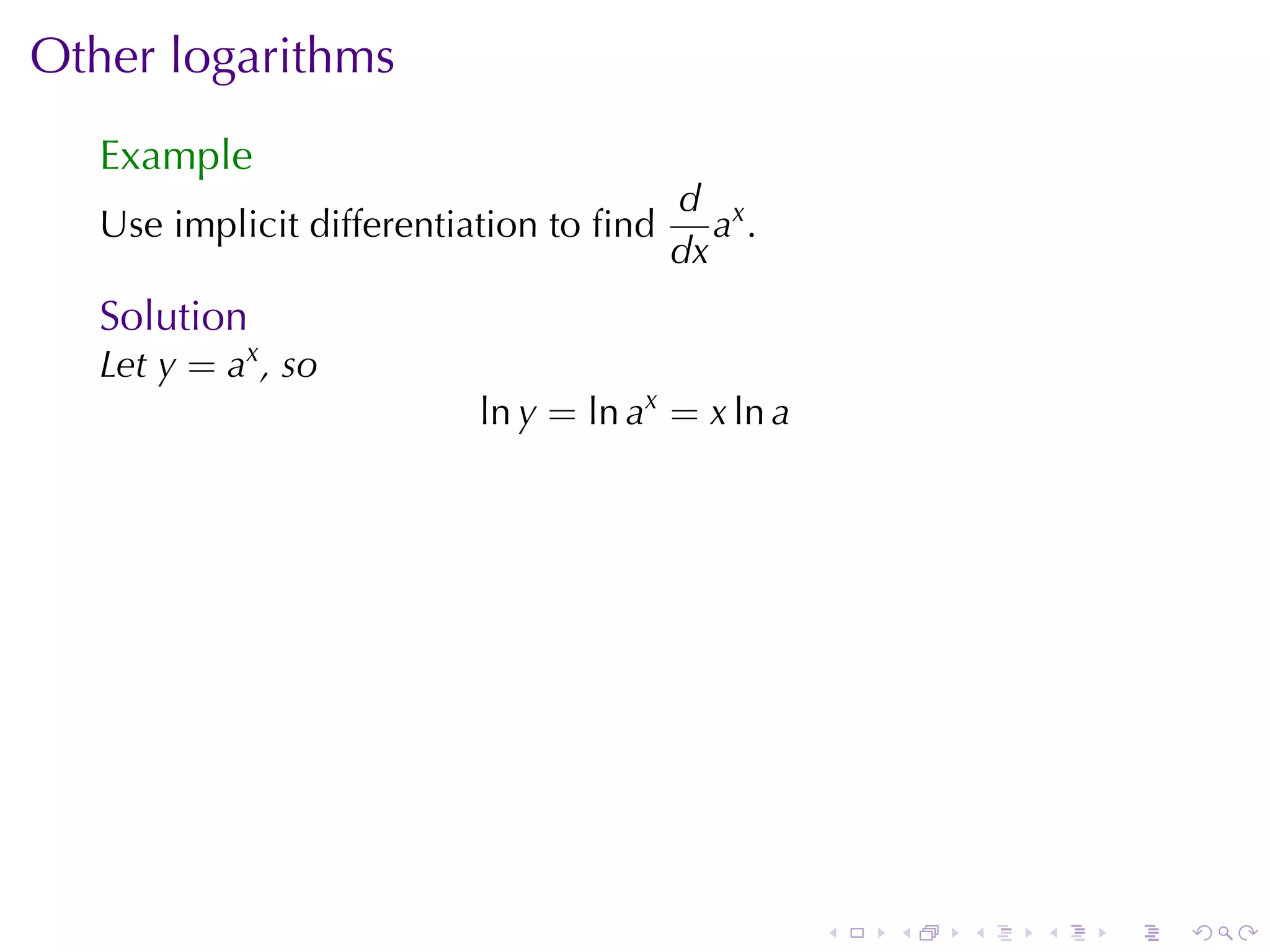
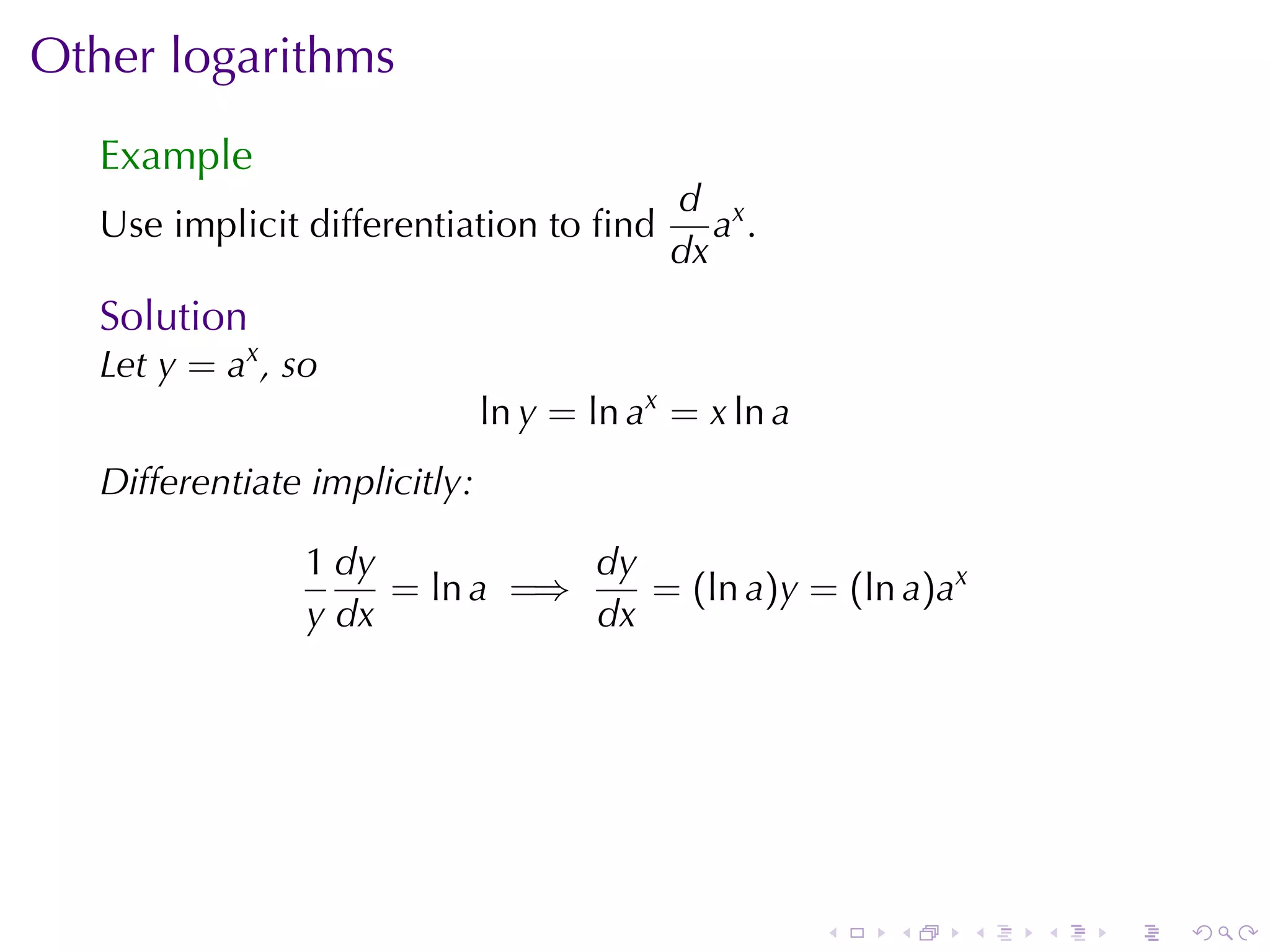
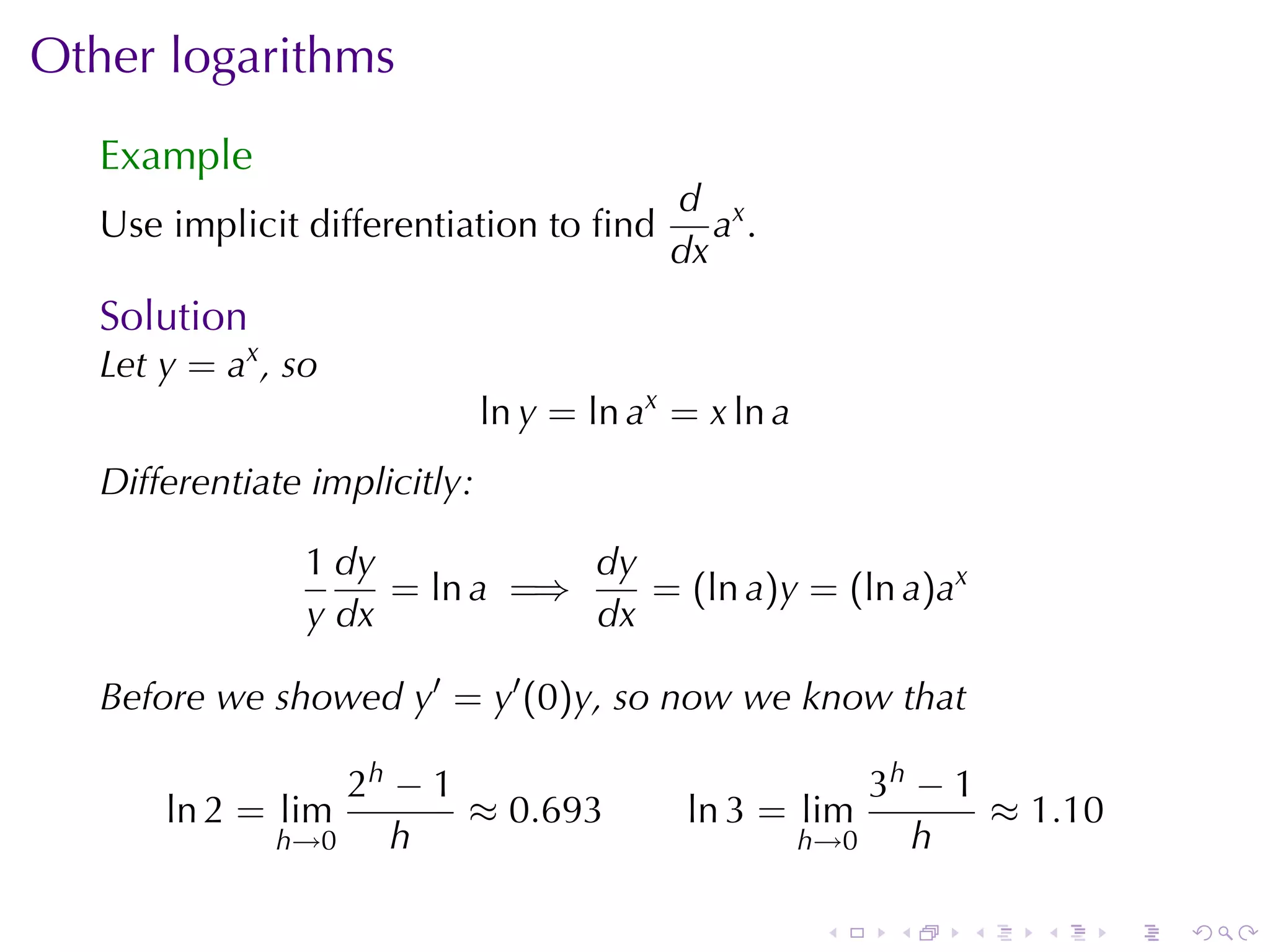
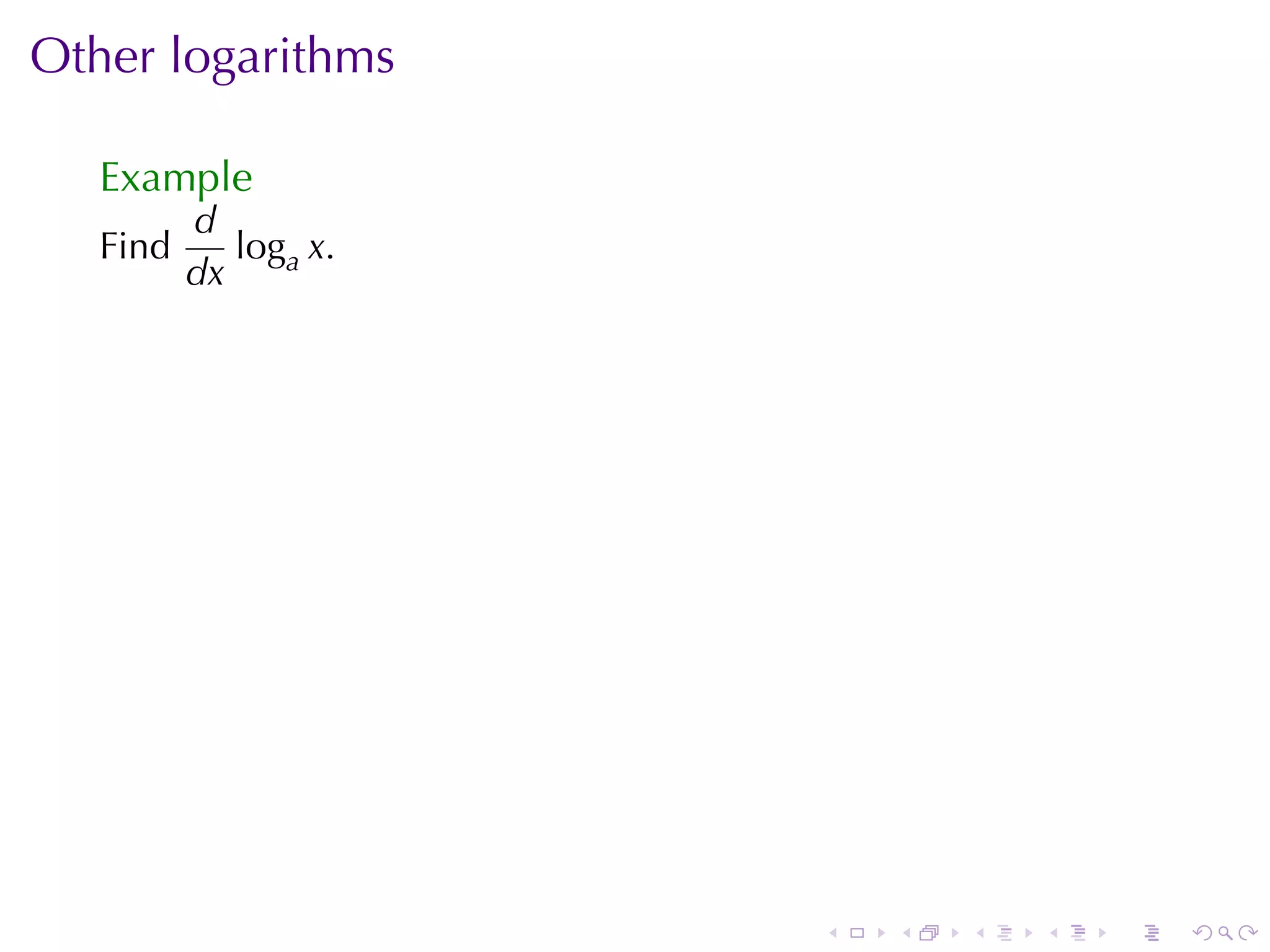
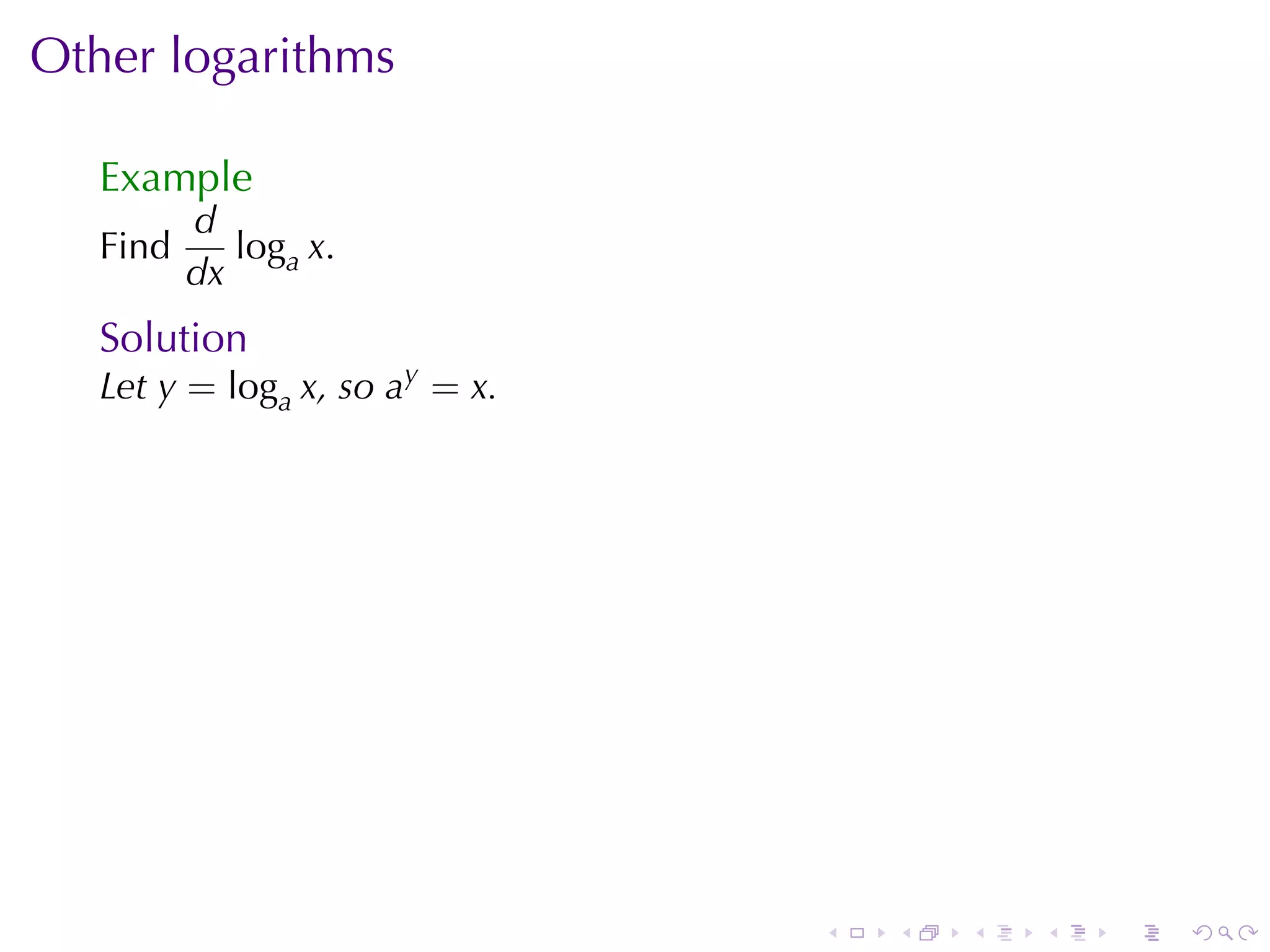
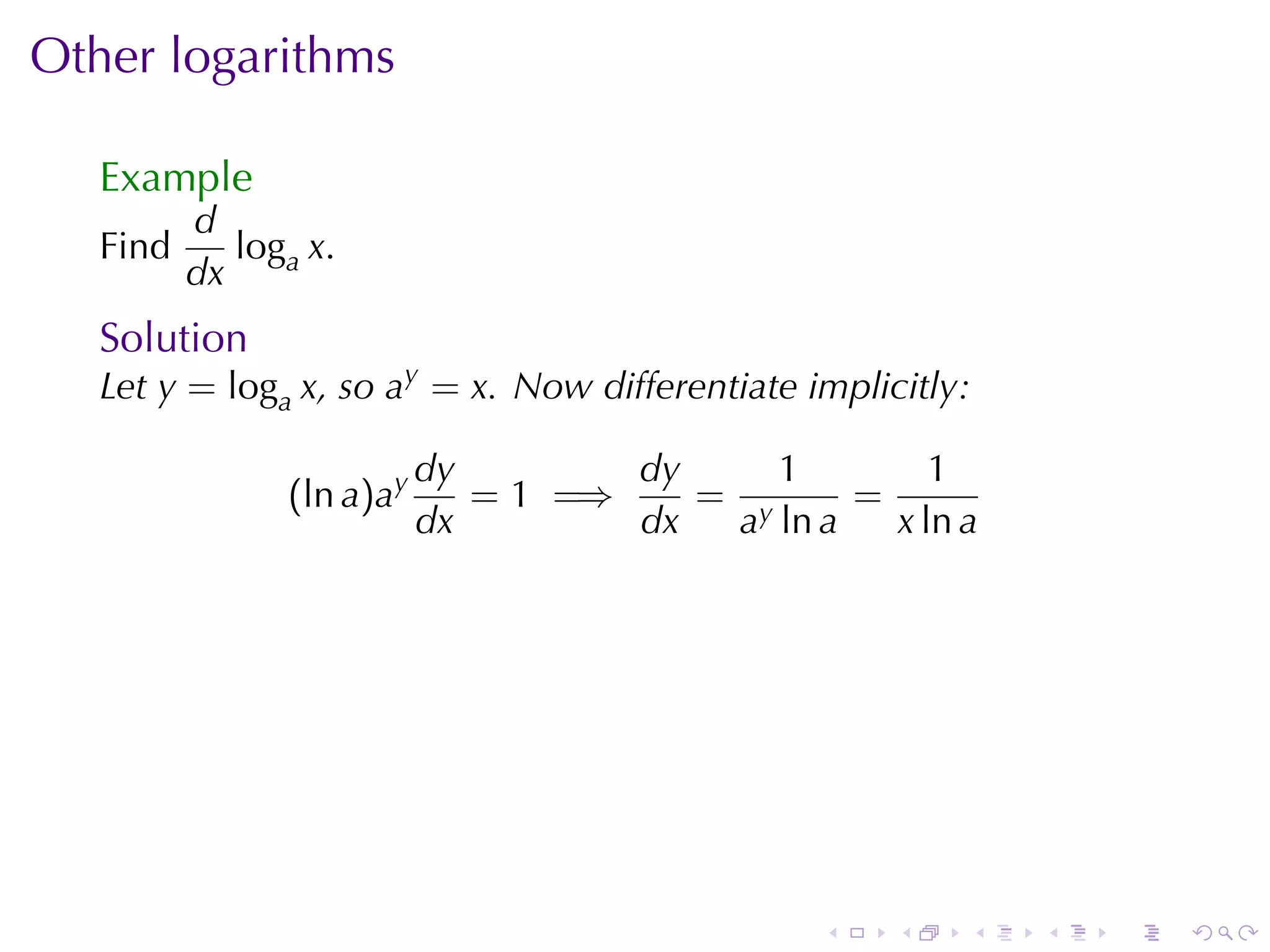
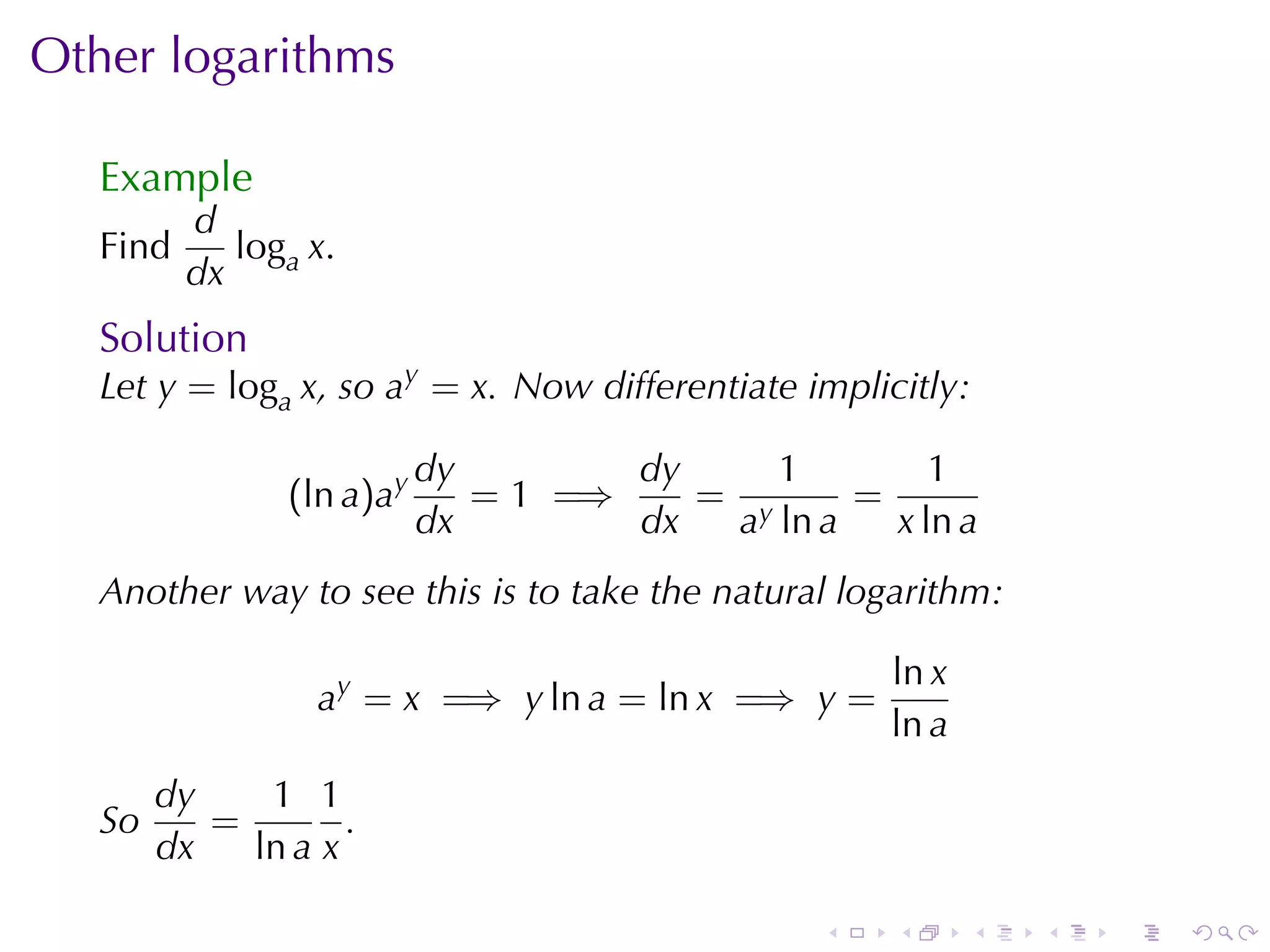
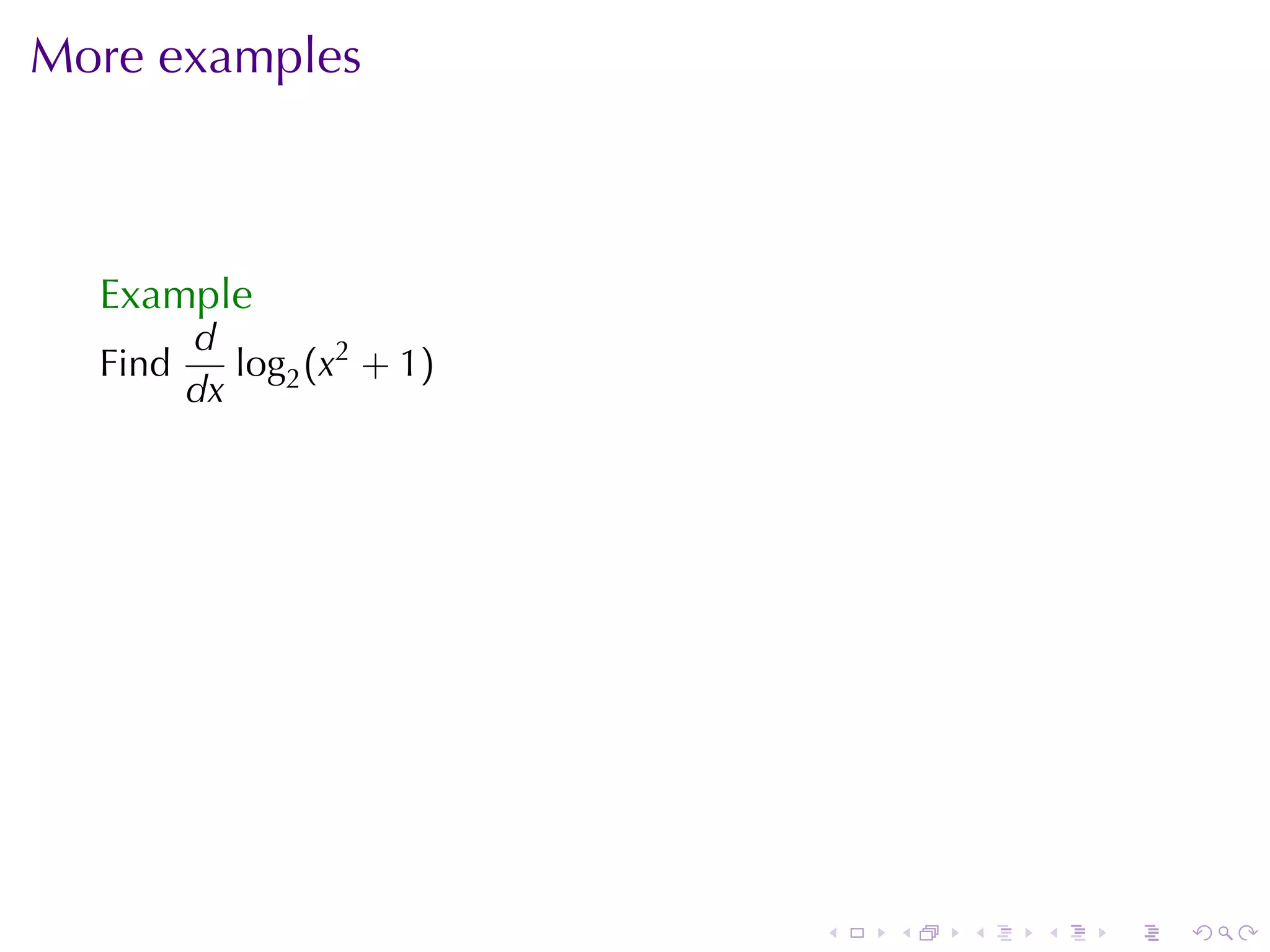

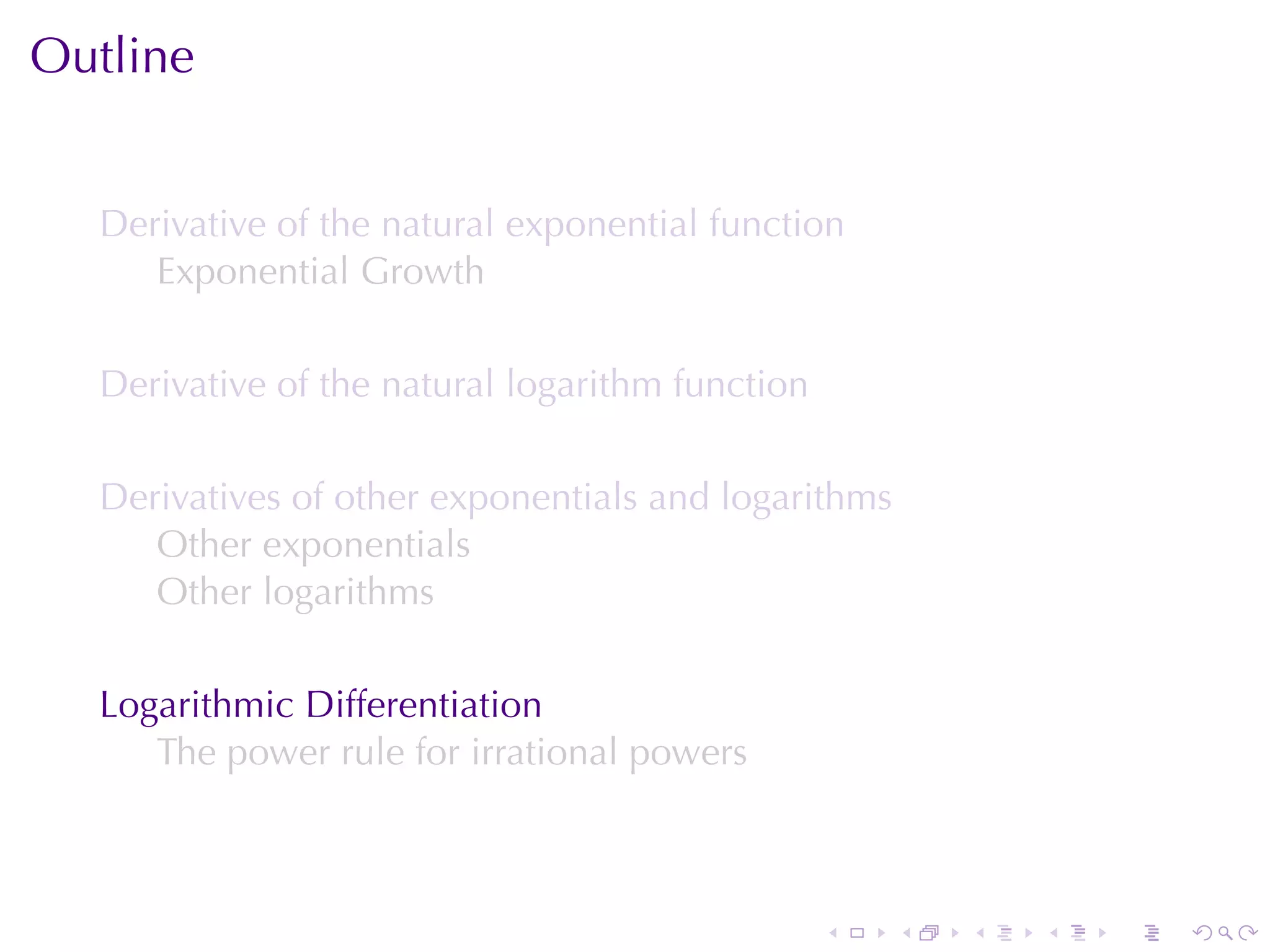
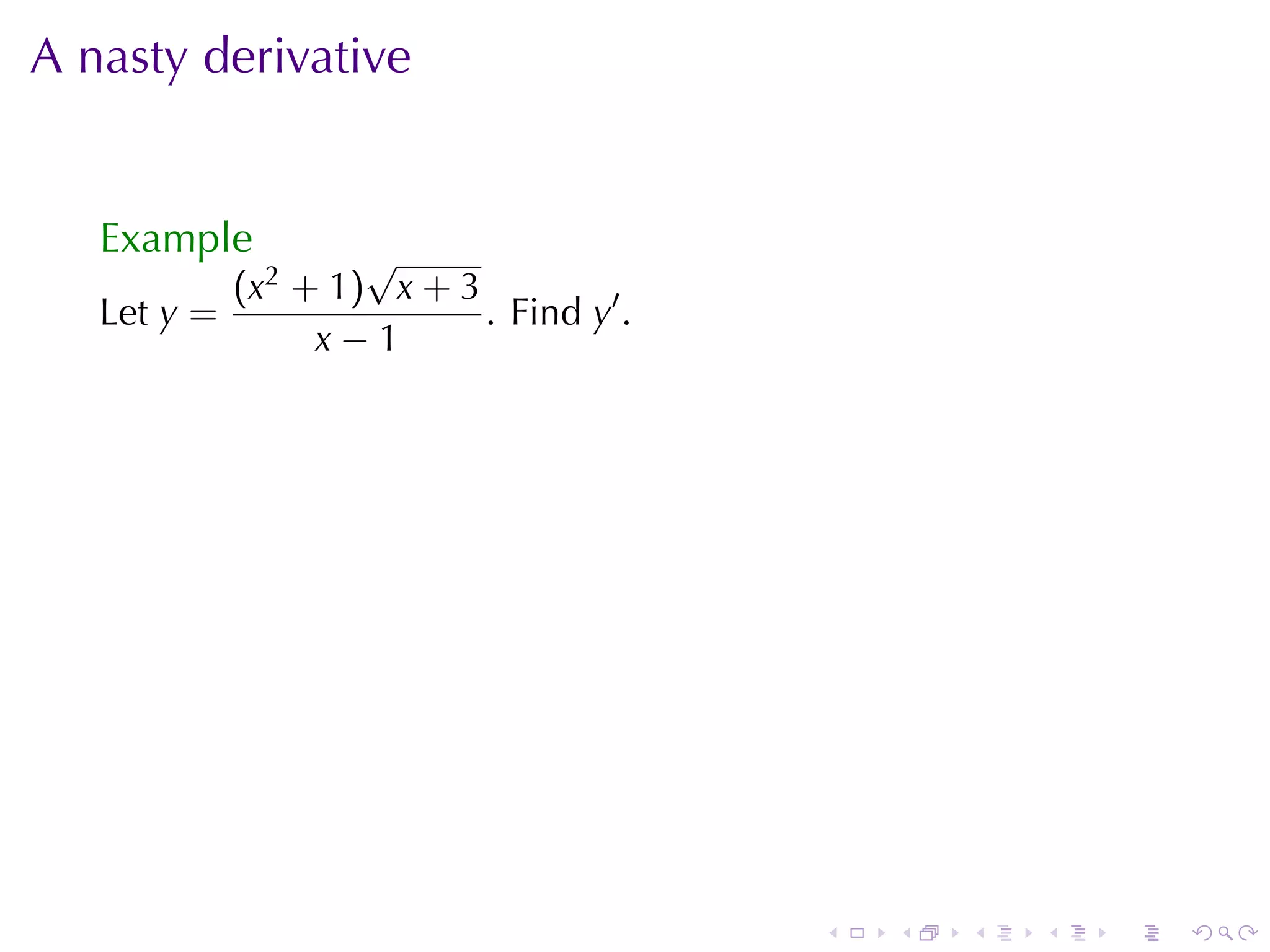
![A nasty derivative
Example √
(x2 + 1) x + 3
Let y = . Find y′ .
x−1
Solution
We use the quotient rule, and the product rule in the numerator:
[ √ ] √
′ (x − 1) 2x x + 3 + (x2 + 1) 1 (x + 3)−1/2 − (x2 + 1) x + 3(1)
2
y =
(x − 1)2
√ √
2x x + 3 (x2 + 1) (x 2 + 1 ) x + 3
= + √ −
(x − 1 ) 2 x + 3(x − 1) (x − 1)2
. . . . . .](https://image.slidesharecdn.com/lesson16-derivativesoflogarithmicandexponentialfunctions027slides-091023082151-phpapp01/75/Lesson-16-Derivatives-of-Logarithmic-and-Exponential-Functions-38-2048.jpg)
